First of all, what are Non-Timber Forest Products?
Non-timber forest products (NTFPs) are any product or service other than timber that is produced in forests.
Down below I’ve listed some forest products for you:
- Mushrooms
- Oils
- Medicinal plants
- Barks
- Resins
- Fibers
- Berries
- Tree Nuts
- Spices
- Honey
- Beeswax
- Seeds
- Forest Tea
Unfortunately, in the past years, non-timber forest products have been given very little attention by forest departments all around the world. We often see old-growth forest cut down to make way for exploitation projects, be it a mining operation, a lumber yard, a palm tree plantation or an oil project.
Recently, the Australian wildfires have brought back much-needed attention to forests around the world. The importance of sustaining forests has become a hot topic again.
You can see this guide as a case against deforestation. But I also did this research to learn in detail about what forests have to offer. I compiled it for anyone who’s also looking to learn themselves. While doing the research I found that there are many ways to earn money from the forest and that they can be used continuously as long as certain rules are followed.
My goal is that some of you might start little nature-based businesses and earn some money. This way we can turn our passion for nature into a job, continue to learn about nature every day and hopefully, our new knowledge will help promote forest conservation.
The Ancient Knowledge We Forgot
Today, people like you and I have found an interest in the non-timber forest products. The need to fight for forest conservation has taught us many things about the forest itself that we had forgotten.
For example, you can earn money by harvesting non-timber forest products. In that case, you have to keep in mind that if you over-exploit them, they won’t have time to regenerate.
In Europe or North America, it’s not such a common practice anymore. Although in countries of Asia, it’s still a common thing. People feed themselves with NTFPs and also make crafts out of them to sell to tourists.
To earn money with forests these days there are two options:
- Cut down an old-growth forest and replace it with a tree plantation, result? Make money.
- Harvest old-growth forests for non-timber forest products, result? Make money.
You earn money both ways, but do you know what the difference is? Old-growth forests are the pillar of ecosystems. They support the world’s biodiversity.
Tree farms, on the other hand, don’t support biodiversity. You plant them in monoculture, and you spray them with pesticides, two things that kill biodiversity.
Even until recently, human survival relied on harvesting from the forest. Think of hunters and gatherers.
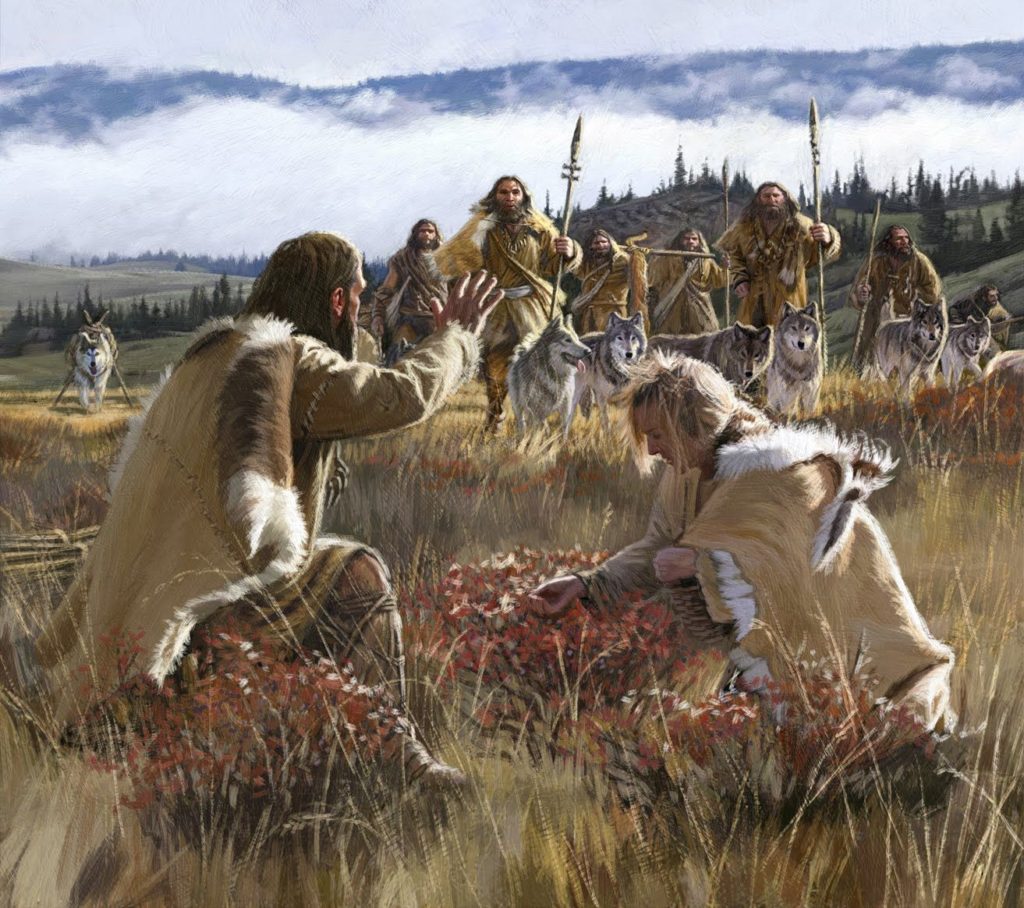
But at a particular moment in history, agriculture took over hunting and gathering. Today, we progress faster than any other time in history, but we now have a problem:
There is too much farmland, too many old forests have been cut down and replaced.
For us to completely destroy forest ecosystems and replace them with farmland is a mistake. We have to leave room for both and have the planet’s biodiversity at heart. Without forests, there isn’t be much space left for wildlife.
The Uses of Non-Timber Forest Products
For a very long time NTFPs have been used as food, forage, medicine, beverages, fibers, and biochemicals.
Let’s get to understand more about non-timber forest products. How can we harvest them? Where and when can we find them? How can we prepare them for sales? But first, we need to prepare ourselves for the harvest.
What you need to harvest forest products
Going into the forest shouldn’t be taken lightly, you might end up being surprised by the elements or wild animals or maybe even get lost. It’s crucial to be well prepared before you go off into the woods, here is a list of things you should bring to make your life easier:
- Good outdoor jacket, including waterproof boots, gloves, a hat
- A backpack with a survival kit
- Some snacks and a water bottle
- A basket, a linen sack, and some small glass jars
- A sickle, a small gardening hoe/fork, and a small hatchet
- Multitool knife
- A good companion, bring your dog or friend along with you
- A bear bell and bear spray
- Maps + compass or Gps + battery pack to charge your electronics.
- I also recommend using a good app to verify the plants you’re looking at. (not always 100% reliable though)
Wild Edible Mushrooms
Depending on which region of the world you are in, you will find different kinds of mushrooms. Some are edible, some are poisonous, knowing what you can pick is the most important to start with.
North American mushrooms – Three types of mushrooms are most commonly gathered in the Pacific Northwest. From most valuable and rare to common and lower priced. Keep in mind that there are regulations for picking forest products such as mushrooms and you should consult your local forestry authorities to obtain a permit.
- The American matsutake or pine mushroom (Tricholoma magnivelare),
- Morels (Morchella species)
- Various species of chanterelles (Cantharellus and related genera)
Morels, for example, are the most adaptable and appear in a variety of ecosystems, their appearances differ wildly and their interactions with the forest ecosystems are numerous and complex.
They are the most sought out for culinary use since they can be so easily preserved. They are valuable, as a result, methods used to harvest morels have sustainability in mind, since the point is to harvest them like crops. Here, you can find an in-detail guide about morels.
Where to look to find wild mushrooms
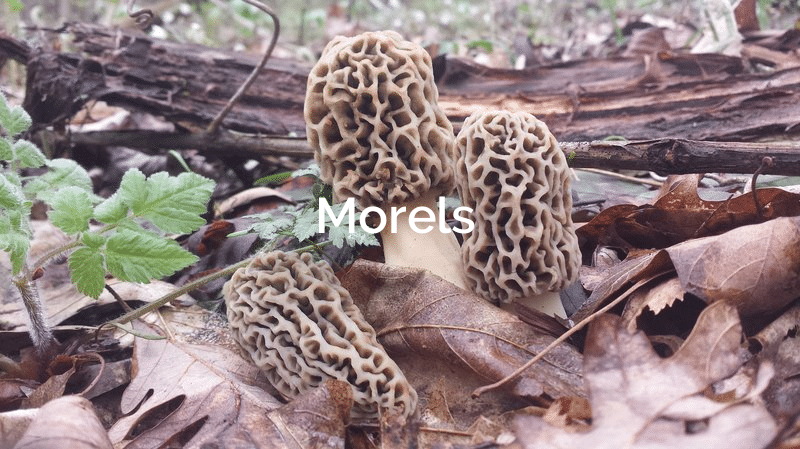
Morel (Morchella Esculenta) – Emerges early spring along the west coast and late spring along the great lakes. Harvested until Fall.
Morels can be found at the edge of forested areas growing near the base of ash, elm, aspen and oak trees. Look for south-facing slopes during the spring as this is where they most often grow. As the season progresses you will find them on north-facing slopes a bit deeper into the woods.
Rivers banks with well-drained sandy soils are also good spots. When you find a morel, slow down your pace because if there is one, then there is a great chance you will find more in the surroundings.
At the base of dead trees. Dying trees like elms or old apple orchards are great spots to search.
Keep in mind while looking that early-season morels are quite small, maybe acorn size but as the season progresses they can get quite large and with a noticeable yellow color. Happy morel hunting!
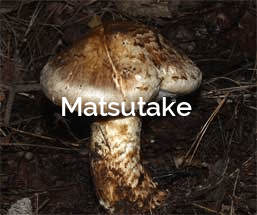
Matsutake (Tricholoma mastutake) – Matsutake mushrooms are regulated in most areas, their picking season usually starts in early fall. Found from the west coast to the midwest.
American Matsutake mushrooms are quite elusive, they are a highly sought out spicy smelling kind that is a key ingredient in some Japanese dishes. You need to know that this mushroom is special and has a symbiotic relationship with trees, picking them in excess will damage a forest ecosystem. Always leave some in every patch you find to let the spores propagate.
Matsutake are white colored mushrooms that grow in sandy soils. You can often find them mostly buried under the soil, with only the cap showing. They can be hidden under moss or piles of dead pine needles. Look for a hump around trees and there’s a chance you’ll find one there.
When you find an old matsutake that’s beyond picking age, look uphill from that area. The spores tend to propagate towards areas of higher elevation as the season progresses.
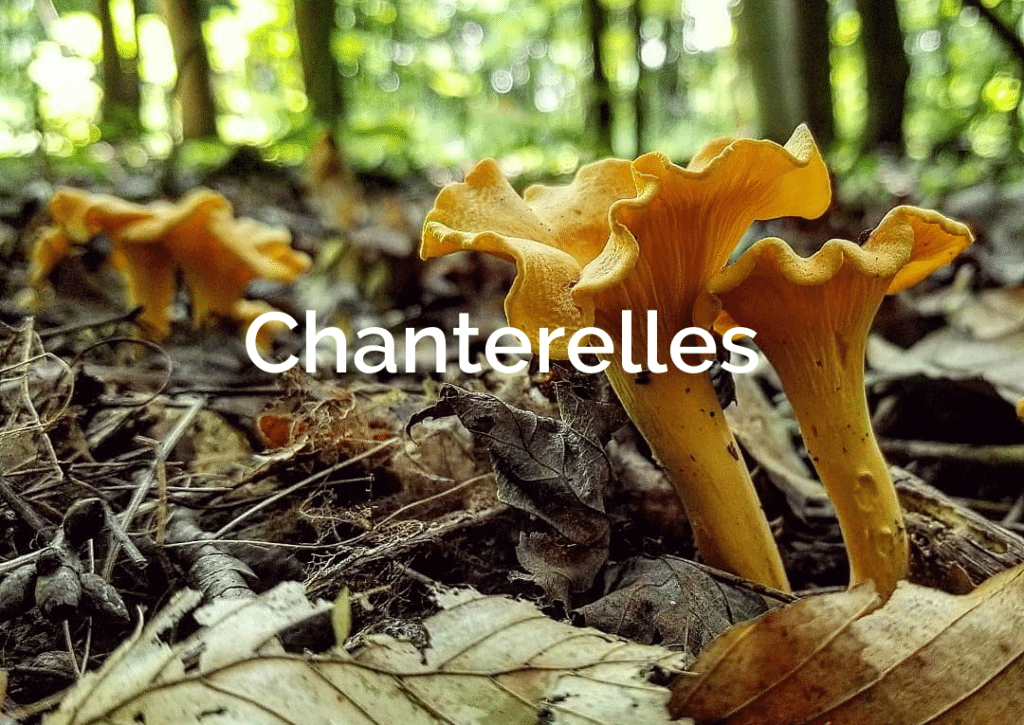
Chanterelle (cantharellus cibarius) – Best to harvest late summer, early fall. It can be found throughout most of North America.
Chanterelle picking season usually starts early June, after a good rainfall. You can find them on the ground patches of ones or twos. They often grow around oaks, maple, beech, poplar, Douglas firm hemlock, and birch. They will often grow at the edge of treelines so old logging areas or trails are great spots to search. Old forests, as opposed to new forests, will have perfect conditions for picking chanterelles.
They will grow in moist areas, creek beds, and areas where water flow after rainfall are great spots. In southern areas, they can be found under blueberry bushes and mountainy areas around douglas fir and white pine.
The most important with chanterelles is that if there hasn’t been any rain lately, you’ll most likely be wasting your time searching. But under the right weather conditions and in the correct forest, it’s not unheard of to collect up to 30 pounds of chanterelles in an afternoon!
When can you harvest mushrooms?
Mushrooms can be harvested as early as spring but some areas allow to pick only during late summer or early fall. This is to help the spores propagate. Some specific areas are mushroom hotspots, for example, little towns that get very few visitors might have an influx during spring because they are near mushrooms growing hot spots. Its also common to pick mushrooms a year after a burn, as the forest floor regenerates, conditions become great for mushroom growth. It is important to note that most commercial morel crops are produced after mixed white spruce and pine stands burn.
How to prepare mushrooms for sale
Picking mushrooms can be relatively profitable, although its uncommon to see a large mushroom picking operation as the profits aren’t easy. Fresh mushrooms can be sold locally with relative ease but to sell fresh or dried mushrooms at an international level, for example to Europe or Japan, the mushrooms need to go through a process for quality assurance. Additionally, markets such as China & India already mass produce mushrooms and flood the market. This makes prices quite competitive and which means it’s not always easy to negotiate.
Warning
It’s also important to ensure that you are picking the correct mushrooms, many of the desirable mushrooms have toxic lookalikes. Refer to this guide for more details on mushrooms, when & where to pick them and their toxic lookalikes. Wild Mushrooms.
Natural Oils
You might know these ones very well since they have become quite popular. Essential oils: they are derived from forest products such as lavender, tea tree oil, patchouli, peppermint, and eucalyptus. Essential oils are made by distilling and pulling the aroma from natural materials. You can use flowers, leaves, wood, bark, roots, seeds, or peel.
Where to harvest natural materials
Since essential oils can be made from almost any natural material, any forest nearby will be your source. You will have access to your climate zone’s plants, flowers, and trees. If you cannot find all you need nearby, then it can be ordered online or bought at local farmer’s markets.
How does distilling natural oils work?
Learning it isn’t as hard as you think, and the cost is quite reasonable to start your own distillery at about 300-600$ for the starting equipment.
You can find a well written out guide here with natural living family.
To put it out simply, here is how it works:
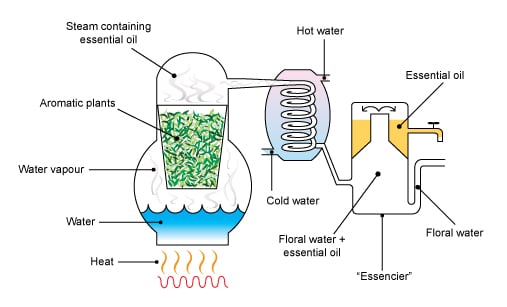
- You boil water: which will turn into steam and heat up the aromatic natural products.
- Steam passes through the plants: it breaks up the aromas and they are carried off into the steam.
- Steam passes through a condenser: it turns it back into water.
- Floral water is made: Containaining your essential oils, it then falls into the Essencier.
- The Essencier separates the two: the essential oils rise to the top and the floral water stays in the bottom tank.
- Your essential oil is ready: Floral water can also be used for body care products as they contain subtle medicinal effects.
Now that you know how to make essential oil, you can turn your favorite natural aromas into oils for yourself or sell for a profit.
Tip: There are many on the market already, maybe you can come up with a wonderful combination of oils the world hasn’t seen yet? With essential oils, the possibilities are endless.
Medicinal Plants
Medicinal forest products found in the wild have been used since ancient times and the best thing is that their use has continued to increase in the past twenty years.
Various regions especially Asia and North America are experiencing a dramatic change in the consumption of medicinal plant products.
There has been an increase in the sales of medicinal plant-based products. Most of the increase in the sales is attributed to the value-added processing, sales of fresh herbs as well as standardized extracts and phytomedicines.
The medicinal plant-based products are, today, acquired from a combination of:
- Wild harvests
- Agroforestry operation
- Farming of domesticated native species
Since wild harvest is the option that encourages protecting old and ancient forests, this is the technique we will go into detail about.
How to find and harvest medicinal plants in North America
There is a large variety of medicinal plants in North America. Knowing how to identify them and find them is important. Learning all the uses of medicinal herbs will take some time but end up being quite a useful skill. Below you will find some of the most powerful medicinal plants found in North America:
Where to look for wild medicinal plants
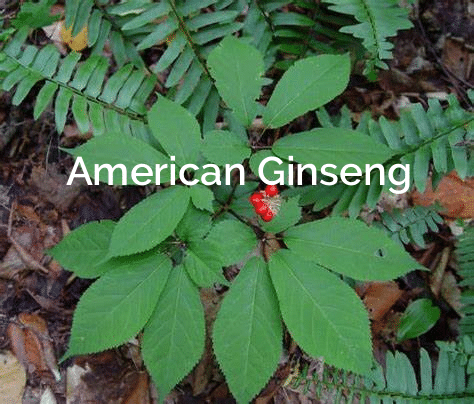
American Ginseng (Panax quinquefolius) Found in the eastern part of North America, north of Florida all the way up to Quebec and Labrador. Grows in shady and moist areas, harvest from early to late fall.
Ginseng is known for its cooling abilities, it’s handy when you need to stabilize fever, reduce swelling and clear out your intestinal tract. The herbal properties are extracted from the ginseng root. Wild American Ginseng is a protected plant because of it’s 5-10 year growth period and overharvesting in the past.
In Canada, it is illegal to harvest although in some states (Alabama, Arkansas, Georgia, Illinois, Indiana, Iowa, Kentucky, Maryland, Minnesota, Missouri, New York, North Carolina, Ohio, Pennsylvania, Tennessee, Vermont, Virginia, West Virginia, and Wisconsin) there’s a harvesting season from September 1 to November 30. Although you must first consult with your local authorities to obtain a harvesting license.
It wouldn’t be a bad idea to give it a shot because one pound of wild American ginseng can sell from about 400 to 800 U.S dollars!
American Ginseng grows in Eastern North America underneath the shade of maple, beech, hickory, oak, basswood and tulip poplar trees. Usually, you will find them in deep, dark soil covered with leaves. A combination of shade and moisture will make the best environment for ginseng to grow.
You can also spot companion plants that grow in the same area as ginseng, plants like trillium, bloodroot, cohosh, wild yam, goldenseal, and Solomon’s seal.
Whenever you find wild ginseng with mature crimson berries, it is crucial for you to plant the seeds, ideally in the soil around the plant because it has been proven to grow the plant. Ginseng seeds can take up to 21 months to germinate! For this reason, if we don’t replant, we will quickly exhaust the forest’s supply.
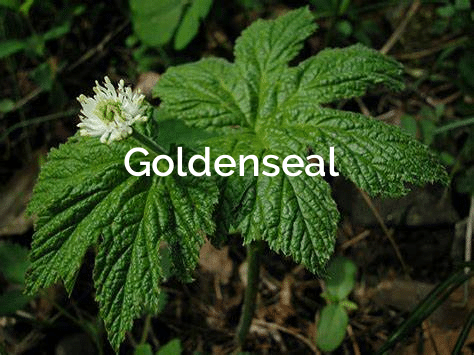
Goldenseal (Hydrastis Canadensis) – Grows around the great lakes in Canada and the U.S and almost as far down as Florida. Grows in drained soil like hillsides. Harvest during mid-Summer.
Goldenseal extracts are often used to treat inflammation of the digestive system, it is also a topical treatment for ear and skin infections. The herbal properties derive from several alkaloids extracted from the rhizome.
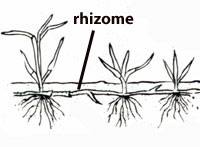
Goldenseal can also be used to produce a natural yellow dye. They range or growth they grow in is secluded to a small part of eastern North America.
Look for a stem with two large hairy leaves and a white petal-less flower (during spring). During mid-summer, the plant will produce bright red berries containing one or two shiny black seeds. Around the month of July is where the root system will have a considerable enough size to harvest.
Similarly to ginseng, goldenseal will grow in rich, moist and loose soil. It prefers to grow on drained soil, which makes hillsides good areas to search. When you find one, you will find many because they like to grow in patches. New growth of goldenseal will come from the underground root, it would be wise to leave some roots behind and plant seeds if you see any.
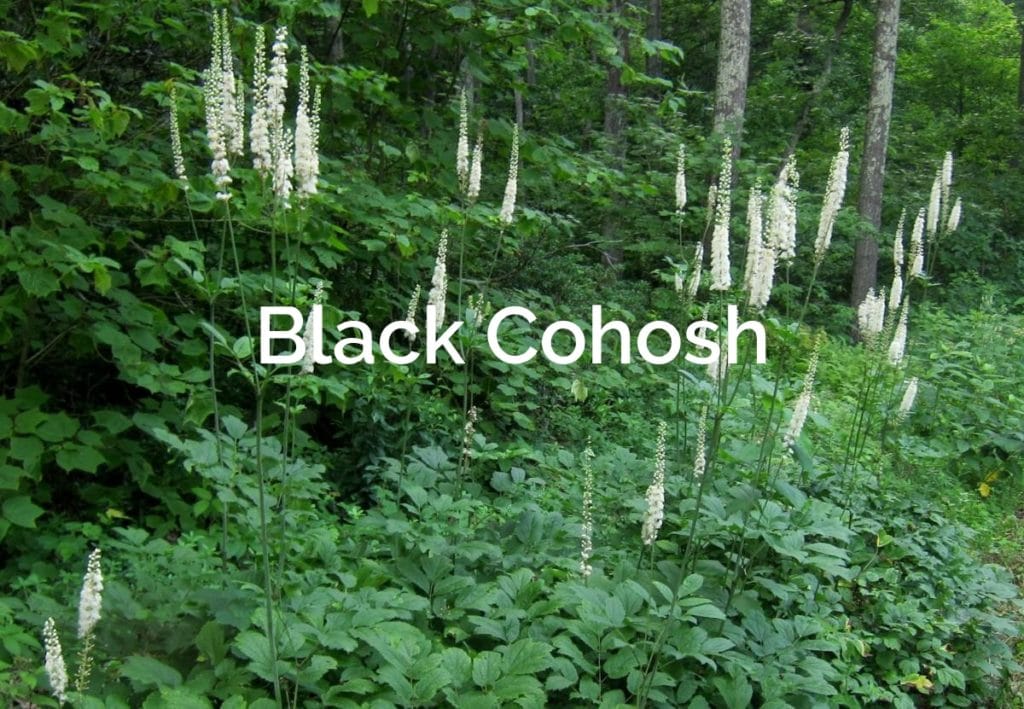
Black Cohosh (Actaea racemosa) – Grows in Eastern North America from Quebec and Ontario all the way down just north of Florida. Grows in shady, wet soils, harvest during late Summer to early Fall.
Black Cohosh (Actaea racemosa) is a medicinal herb useful for treating symptoms of menopause, painful menstruation, acne, weakened bones and for starting labor in pregnant women. It’s been a prized herb for a long time with the Native Americans and to this day still has many uses. The root of the black cohosh is what holds the medicinal properties.
Black Cohosh’s peak harvest time is late summer when the roots have grown large enough for a worthy harvest. It will grow in shady damp soils, usually found in humus-rich soils. When looking for black cohosh, good areas to search in are the mossy beds of a forest. Though as opposed to ginseng and goldenseal, they are adaptable and can grow in different types of soil and shade conditions.
Their root system needs room to grow and you will usually find them around 2 feet apart from each other. They boast large leaves and white flowers. Considering it is harvested on the 4th or 5th year of growth, like any of the medicinal herbs above, we should be careful when picking and aid it in reproduction. It is also possible to grow your own black cohosh in a garden.
Other companion plants to look for are mayapple, trillium, bloodroot, ginseng. These will generally grow in the same conditions and chances are you might find black cohosh around if those are present.
How to prepare medicinal plants for sale
Pharmaceutical drugs are derived from plants and are sometimes referred to as herbal medicine. It’s not a simple process, so I’m thinking being a supplier is a good option, from there you need to find the buyers to sell your harvested herbs to.
Most branded companies grow their herbal medicine from seed or obtain them from nature. Keep in mind that some companies brand around having wild-grown medicinal herbs, which means they will prize your wild picked herbs.
What you need to do is ensure your product is clean and dried. A rule of thumb is that usually, 3 pounds of fresh roots will get you a pound of dried root. Keep in mind that you might also lose some roots in the cleaning process.
Out of the 3 forest products listed above, Ginseng is the most profitable, followed by goldenseal then black cohosh.
Tree Bark
Few people will stop and wonder if tree bark is a valuable and potentially profitable forest product. I think the majority of us would be surprised to learn that it is! And due to its special properties, there are plenty of buyers on the market that will love to get their hands on barks that they might not have access to around them.
What are the uses of tree bark?
There have been several uses for tree bark in history, from making blankets to making canoes, for clothing, baskets, and mats but it also can be used as medicine and tea.
Depending on what tree the bark comes from, the ranges of ailments it can treat is interesting. Its most common use is as an anti-inflammatory, but it has also been documented to help with high blood pressure and arthritis.
Tree bark is a major component in a variety of herbal medicines, it is used to wash wounds, to make salves, tinctures, and poultices.
Did you know one of the main ingredients in aspirin is the bark from the willow tree?
When is tree bark harvested?
There is no specific time to harvest tree bark. It can be done at any time of the year though the preference is to harvest in autumn and spring. During autumn, sap and energy move more freely through the trunk while it prepares for winter, this allows the bark to be removed more easily. During spring, the bark is still just forming on the branches and is still soft and relatively easy to harvest.
What tree barks have value and are worth harvesting?
These are the most commonly harvested trees for their bark:
- Willow
- Cherry
- Hazel
- Witch
- Sassafras
- Black Haw
- Birch
Within the tree species above, you will find barks with medicinal properties.
How to harvest tree bark for medicinal purposes
Once you have found your tree, start with finding a branch and find the collar (the fatter part at the base of the branch). You will want to cut the branch just above the collar and with as clean a cut as possible. If following ethical harvesting, you won’t damage the tree seriously and it will naturally heal.
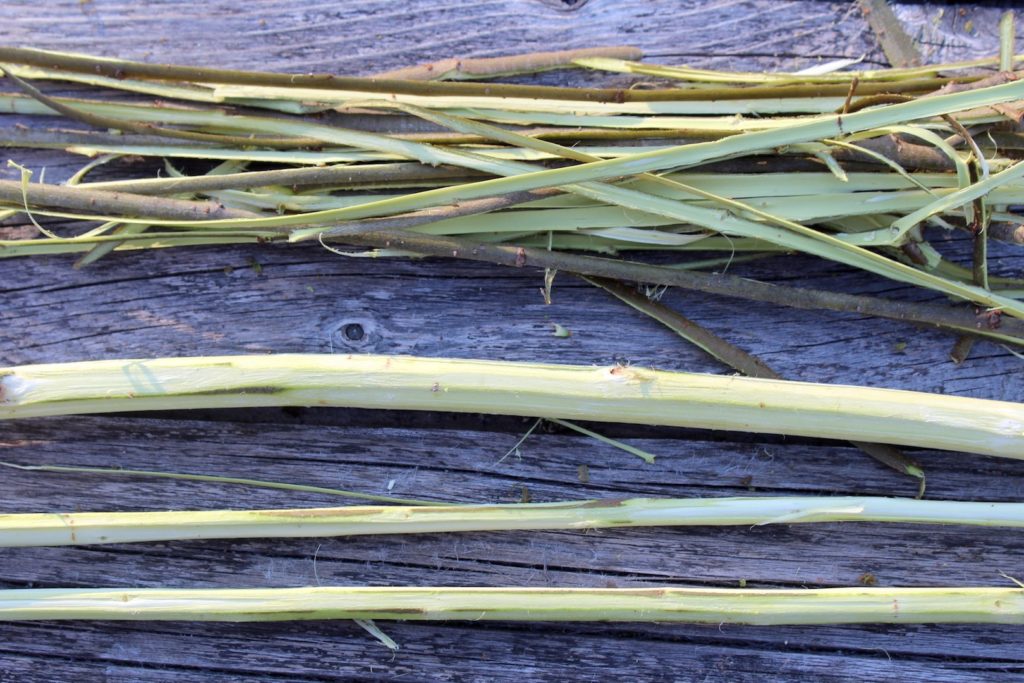
With a knife try to shave down the length of the branch, removing long bark strips. It needs to be done getting all layers until you get wood. The cambium, the last thin layer between bark and wood is very important to get, it’s where you get the medicinal effects.
How do I ready treebark for sales?
Now spread the bark in a single layer on a drying rack in a cool, dark place, and mix regularly until dry, it might take a few days. Once it’s dry, store in jars, bags, or containers, in a dark place. From there it’s ready to be sold online or locally. Just make sure that your contents are clean from bugs, lichens or dirt. Good places to start are online facebook vendor groups, local farmer markets, and specialized natural medicine markets.
Natural Tree Resin
Tree resin is a forest product with a surprising amount of uses, it can be used for the following:
When you think about it, learning how to harvest and use it might end up earning you a decent amount of money.
What is tree resin?
Tree resin is the sticky goo that flows on the exterior surface of a tree, but not every tree has it in large quantities. It is often produced by a tree to clog a wound or scratch and protects it from further environmental or insect damage. Trees have different types of resins, you’ll want to know about the best species of trees to go after when you are ready to harvest.
There is a difference between tree sap and tree resin, while both of them have their uses, it’s important not to confuse them. Tree sap is a liquid with an almost transparent color, it’s composed of water and sugar while tree resin is an amber-colored thick and sticky gum.
Types of tree resin
There are two main types of resins:
- Hard Tree Resins: Commonly used in varnishes and adhesives because of their transparent and sticky properties.
- Soft Tree Resins: Commonly used in incenses, medicinal purposes and foods because of their gummy, oily properties.
- Rosin: Applied to musical instrument’s strings to increase sound quality.
What you need to harvest tree resin
Tree resin is extremely sticky, so anything you use to harvest will likely be impossible to clean. You’ll want to dedicate it to tree resin harvesting only.
If you harvest it naturally, you won’t need much:
- An old pair of gloves
- Some old clothes
- A butter knife
If you set up a little commercial tree resin harvesting operation you’ll need more:
- A sharp serrated knife or a hatchet to make incisions
- Nails
- Hammer
- Small buckets
- Pieces of thin metal sheets (to guide the resin into the bucket)
How to Harvest Tree Resin
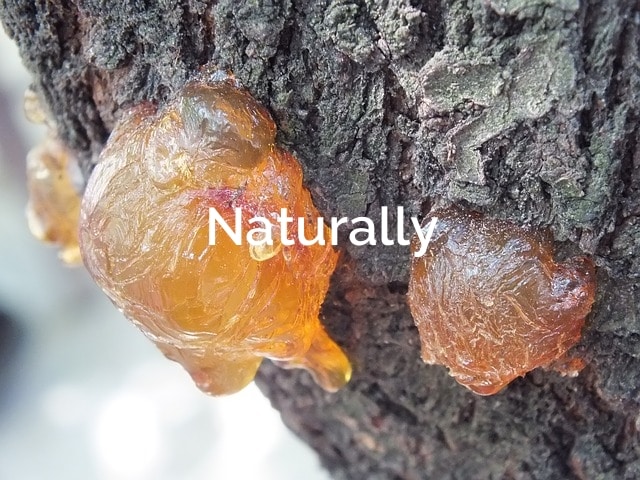
Naturally – You want to look for scratches, broken branches, or wounds. Remember that the tree creates resin to protect itself, if you take all of the resin from a wound, you are basically putting the tree back into a vulnerable situation. Sustainable practices call for harvesting only the extra resin dripping down from these sites.
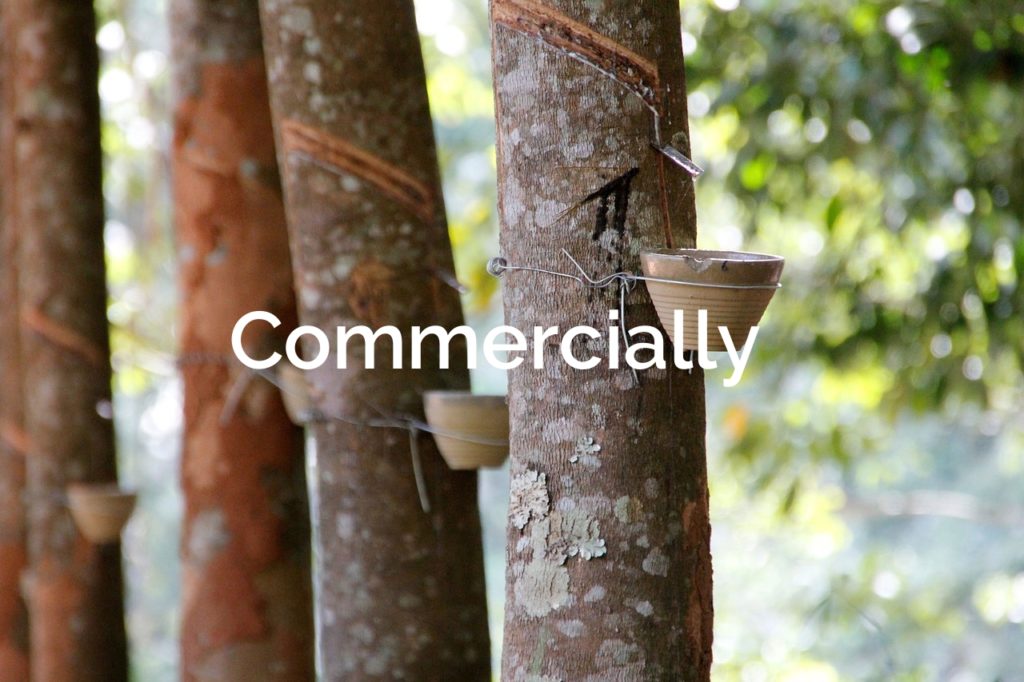
The commercial method is to cut an incision in a tree and place a bucket underneath it. The sap will flow but very slowly, therefore the process can take several months and years but can be done continuously. After each cycle, you must wait a period of several weeks until a new incision is made, and then the process begins all over again.
What trees have resin
Conifers have the most abundant amount of resin, it can be found quite easily. Pines have a resin with piney, lemony smell in abundant sources, especially on broken limbs. Spruces have resin with a more musky smell but also produced in large quantities.
How to identify Spruce from Pine
Pine has long thin needles that come out in bunches from an extremity, spruce has short thick needles that cover the entire branch.
Where to find them
Pines and Spruces range of growth is limited to the northern hemisphere, they are most commonly found in Canada, U.S., Russia, and Europe although you can find them in eastern China and in some parts of southeast Asia. You’ll want to find an older forest with large coniferous trees, that’s where the biggest resin deposits will be.
When to harvest
Resin runs faster in early spring or early fall, whenever you expect fairly warm weather. In cold weather, the resin will thicken and flow very slowly.
How to prepare tree resin for sale
The most common way to sell resin is to make it into incense. But if you would rather sell it in its raw form, you can either sell it as is or take it through a cleaning process and put it into bags for sale.
Take a look at Dominic Bender’s guide on how to ‘resinate‘ (clean tree resin). You’ll find that the end result is very satisfying! Be careful though, this method will remove the essential oils but the end product will still be for food glazing, gum, adhesives, and varnishes.
Where to sell Tree Resin
Here’s where you can sell forest products such as Tree Resin:
Online:
- Etsy, Amazon, Kijiji, Alibaba, Facebook Groups
- Online Naturalist/Druidic communities
Near you:
- Crafter Fairs, Flea Markets, Farmers Markets
- Local Native American Shops
- Naturalist Stores
Forest Fibers
Forest fibers can be split into two categories: soft fibers, and hard fibers. Both have separate uses and techniques to work with.
Soft forest fibers
Flax, hemp, jute, kenaf, ramie, roselle, sunn, and urena all are natural bast fibers. These flowering plants with net-veined leaves have a soft, fine and flexible fiber that’s used for textiles and cordage. You can find the bast fiber between the woody interior of a plant and the exterior epidermis or bark.
These important forest products were the first materials humankind used to make ropes, bagging materials and yarns.
Hard forest fibers
Hard fibers can be extracted from the bark, the roots, sometimes the branches or stalks themselves. The hard and wear-resistant fibers have been used to make baskets, carpets, blinds, and countless decorations. Good plants and trees to use for hard fibers are ash tree, willow, hazel, hickory, poplar, vines, palm, cedar, and grasses.
Tools you need to use forest fibers
One of the most interesting and useful uses of forest fibers is weaving. It’s a trade that’s been mastered over the years, for this reason, many of the tools below are specialized tools that you might never have heard of before. Here is what you need to prepare the forest fibers and tools you will need to start weaving:
- A Shaving Horse (to make your fiber strips)
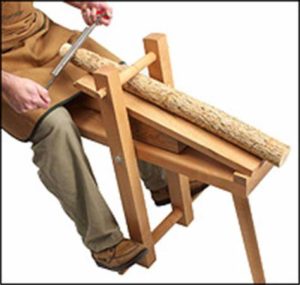
- Bark Shaving Knife
- Brake (Special tool to remove bark from willow rods)
- Formers (To shape your strips and rods into the form you want)
- Secateurs
- Bodkins (Specialty tool to weave the fibers)
- Hammers
- Greasehorn (to grease your bodkins)
- Round-nosed pliers
- Soaking Tank (some fibers become more pliable when wet)
- Lapboard
- Rapping Iron (A metal tool to beat down the layers of robs for tightening)
- Weights (to hold down your work)
Where to find forest fibers
You can harvest in the forest where you are or even grow willow or other fiber plants in your yard. It depends on your climate plant hardiness zone and if you are east coast or west coast.
How to harvest forest fibers
Bark – On tree trunks, you can harvest the inner and outer bark for weaving. Usually, the inner bark will be stronger and have a woody color but with the outer bark, you can sometimes get a mix of colors for an interesting look. It all depends on what tree you harvest it from. Late spring to early summer is the perfect time for harvesting because the sap is rising in trees. Cut a tree down, cut it in smaller trunks and work at it with your tools, one tree can give you bark to make baskets for years. Once you have your strips, coil them in hoops and store them in a cold, dry place.
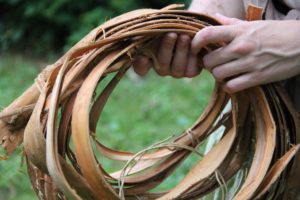
Vines – Chances are there are plenty of vines in your area that can be used, just avoid the prickly and poisonous vines. Good examples to harvest are wisteria, honeysuckle, bittersweet, grapevine, kudzu. As opposed to trees, you will harvest them in the wintertime because the sap is down. Bring them with you and boil them to get any fungus or bugs off of them. Coil them in a hoop and store them in a cool, dry place. When you are ready to use them, you will boil the hard vines again to soften them down. For the softer ones like kudzu, you only need to put them in hot tap water for 15 mins to make them pliable.
Foliage – If you like gardening, this is where it gets fun! You can grow all sorts of foliage to use for weaving. Iris, daylilies, red hot poker, maidenhair fern are great examples. Just cut them right after they bloom, lay them out in a cool dry place to dry or put them on a screen and let them dry in the sun. Once they are dry, you can pass a string through them at the base and hang them up or just bundle them up.
How to prepare forest fibers for sale
The online basket-making community is huge! If you arent interesting in making baskets or weaving you can certainly harvest and sell the materials. If not, a great value-adding technique is to weave them into baskets, carpets, blinds or ropes. It can be a whole lot of fun! If you find a love for basket weaving and become quite adept, there is also money in running classes too.
How to weave Forest Fibers
There are many techniques of weaving forest fibers, and there are many experts giving weaving classes in person or weaving guides online in pictures or videos. It’s not too easy to start, it takes patience and practice to get good. To start, we recommend that you learn the most basic technique, the under and over weaving technique to make a mat:
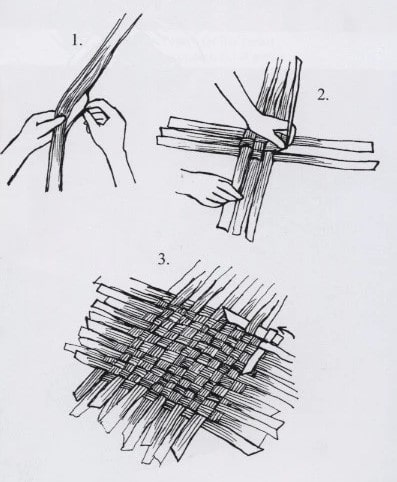
- Make a small split in 3 rods or strips of your material at the center using a knife (one split roughly a bit larger than the diameter of an unsplit rod or strip)
- To start the mat, you will cross some non-split fibers through the split ones to make a secure cross-like shape.
- From there, continue using an under and over pattern to weave with your strips or rods until you have a big enough mat. To finish, pass the last strips underneath the carpet through the loops far enough in and tighten.
Where you can sell
If your craft is quite good, flower shops, decoration and crafts shops might be interesting in displaying your work. If not then the usual methods:
- Crafter Fairs, Flea Markets, Farmers Markets
- Etsy, Amazon, Kijiji, Alibaba, Facebook Groups
Forest Spices
They are hard to distinguish but you can split these forest products into two categories:
Herbs – The non-woody part, usually the leaves or stems. Herbs don’t usually grow very big and grow in the open.
Spices – Roots, rhizomes, stems, leaves, bark, flowers, fruits, and seed. They can come from large trees or small plants with underground parts.
Spices have long been used by humans, to add flavor to dishes, to preserve food and to add fragrance. There are thousands of different spices in the world, having access to the new world brought even more to the table.
Some well-known wild spices found today in North America are allspice, smooth sumac, wild bergamot, capsicum peppers, sourwood leaves, wild ginger, spicebush, maple syrup, chicory root, and vanilla. Well-known wild herbs are wild mint, wild chives, wild garlic, wood sorrel, horsemint, juniper, loveroot, California bay, tarragon, sagebrush, and nettle.
Where you can find forest spices in North America
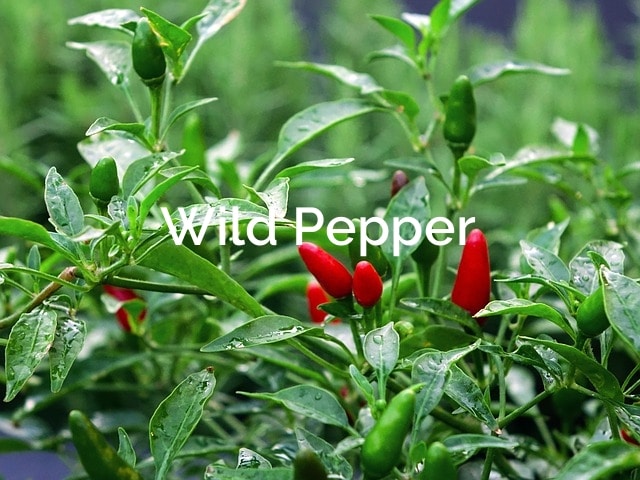
Chiltepin Peppers (Capsicum Annuum) – Grows distinctly south, commonly found in Texas and Mexico, they grow in slightly shady and hot areas. Since this part of the country never freezes, they can be picked all year long.
They are known as the mother of all peppers because of their insane spiciness, be careful when eating these!
With these, you harvest the pepper and leave the bush, in terms of sustainability it’s fine to use this method but like always, leave some peppers behind.
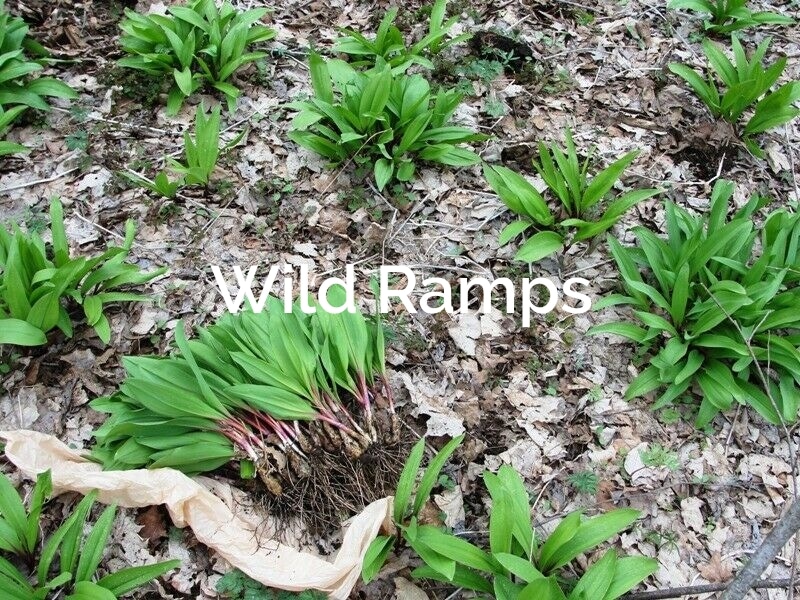
Ramps or Wild Garlic (Allium canadense) – Harvest during spring, usually mid-April to mid-May, depending on how early the hot weather comes. Ramps are native to eastern North America, in mountainous and foresty areas.
Ramps grow in full to partial sun in moist areas. It likes loose soil and it is found throughout forest floors.
Avoid marshes or watery areas as they cannot grow there. Some say that when foraging for ramps, you should follow your nose rather than your sight, they have a distinct garlic aroma that you won’t miss if you’re in the area.
Eastern ramps have gained in popularity these years and are in threats of over-harvesting. The sustainable method of picking ramps is only to collect 10-20% of a patch any time you find one. Keep in mind that if this patch is in a well-known area, others will pick there too, the less you take the better for the patch to regrow. Native Americans picked ramps by cutting one leaf, leaving the other leaf and the bulb in the earth, this ensures the colony will continue to grow relatively undisturbed.
If you are after the bulb, you don’t need to yank them out of the ground, dig around them and expose the bulb, cut it above the roots and cover the roots with dirt. Ramps take up to 7 years to mature, keep that in mind when you take the bulb.
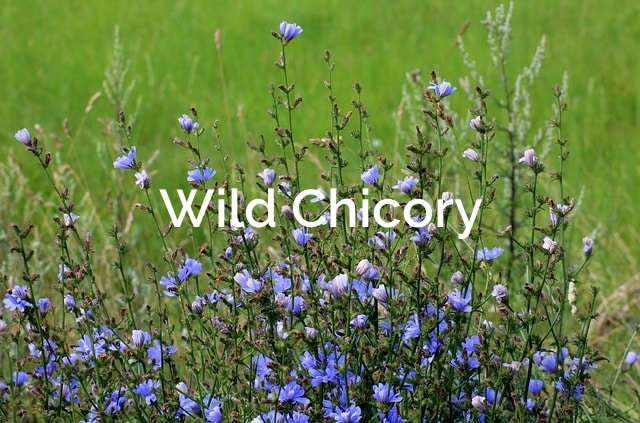
Wild Chicory – It grows naturally in North America, usually found in limestone soils. Picked from Spring to Fall although Fall harvests yield the biggest roots.
Chicory is a purple flower that can be used in salads and dishes, the flower, leaves, and roots all have their uses. The most common use being roasting chicory root to use as a coffee-like substitute.
Chicory will bloom during July and October and grows in plenty of areas, it is commonly seen along roadsides but I suggest against picking those because of how close they are to pollutants. Keep away from pesticide sprayed areas, a good place to find them in an old country road.
The best time to harvest chicory is during fall, between September to November, you will get the biggest root yield. They are common and not in risk of extinction, simply pull the whole plant out, you might have to dig first not to lose big parts of the root.
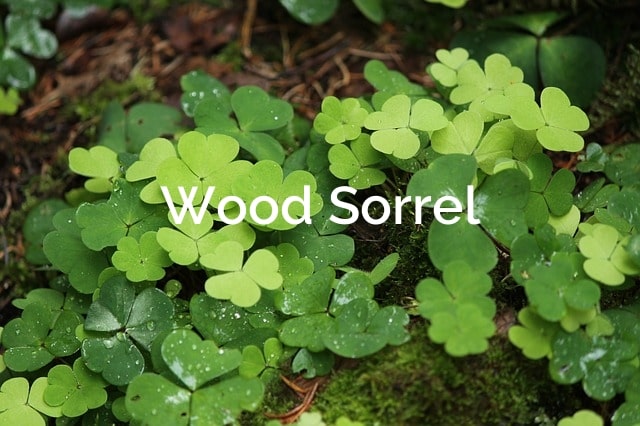
Wood Sorrel (Oxalis stricta) – grows throughout North America. It likes well-lit areas, other than forests, you can find them growing in parks, community gardens, and backyards. It can be harvested from Spring to Fall.
They can often be confused with clovers, a good way to tell them apart is the flower, wood sorrel bloom a small yellow flower. The upper leaves, upper stems and flowers can all be eaten. Wood sorrel has a sour, lemony flavor that goes well with fish, vegetables, and soup.
To harvest them you can clip the upper parts or pull them by the roots, they are in no risk of being extinct so you can freely pick. Although if you find a good spot near you that you’d like to keep picking from, always leave some behind and don’t pull up the roots.
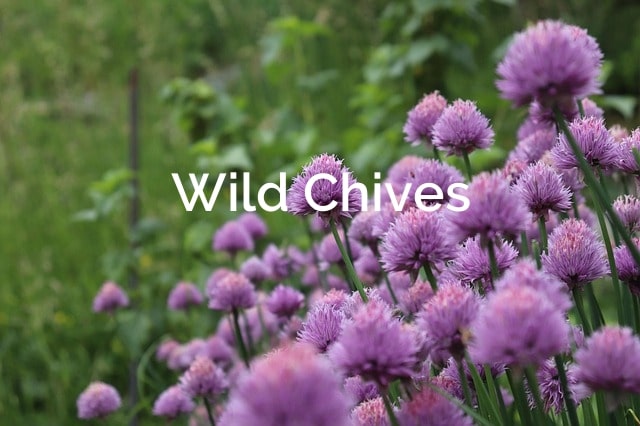
Wild Chives (Allium schoenoprasum) – Wild Chives can be found in the wild throughout the northern part of North America. Appears during very early Spring and can be harvested until Fall. Grows in moist open areas.
When they have flowered, they can be easily identified by their pink puffy flower but before they flower they look like a normal clump of grass except their stems are hollow and tubular. They have a slight but distinct oniony smell. Every part of the plant can be eaten but stems are most commonly used, they can add delicious flavor in salads, soups or just an added spice.
Maybe you remember seeing those in your backyard growing up, they do appear in parks and common areas but in the forest, you can find them where the trees break and the sun comes in. A good spot to search is by cliff areas, they have been commonly spotted atop cliffsides. Also alongside riverbeds where the sunlight comes in.
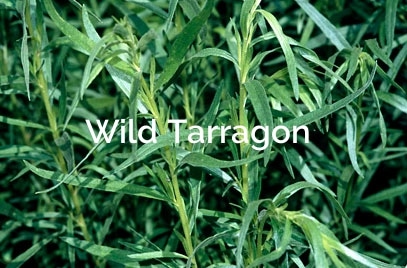
Wild Tarragon (Artemisia dracunculus) – Is commonly found past the great lakes all the way to the west coast of North America. More commonly found in plains and grasslands or forest breaks with sunlight. Harvested from spring to fall.
You can find wild tarragon in small patches or most often in massive colonies, in some areas it’s considered a weed. You can find them in dry open patches mixed alongside grass and all sorts of weeds. Countryside hills are a good area to search in. Tarragon has a smell of licorice which can help in identifying.
Since they are so common, you can simply pull them out from the base and use the leaves or seeds. It is said that younger specimens have a stronger smell and taste.
How to prepare forest spices for sale
Not all wild spices have the same preparation, some you need to dry, some marinate and others are eaten fresh!
Drying your wild spices – The best way is to lay them out on a specially made basket. Let them dry in the sun for a couple of days up to a week. Depending on how big your harvest is and how thick your spices are.
Marinating your wild spices – Simple enough, cut your garlic, onion bulbs, or herbs and put them in a mason jar with water and vinegar. Leave them in the fridge and eat when you’d like!
Eating them fresh – Some spices like chives and sorrel are delicious in fresh salads or soups. Eat them fresh and savor their delicious flavors.
Roast them – Wild chicory root is often chopped up and roasted to be brewed after. It makes a good replacement for coffee.
Forest Berries
Wild berries can be found through forests all over North America, deliciously sweet and sour. Knowing where to find these forest products and recognizing which can be eaten is a great asset if you want to harvest for yourself, sell them or survive in the wild.
Most berries will grow in patches, but each grows in different types of soil and environment. Depending on where you live, berries might be harvested earlier in the year, generally the more south you are the earlier you can harvest. Our harvesting time will be based on the north-eastern weather.
Where you can find wild berries in North America
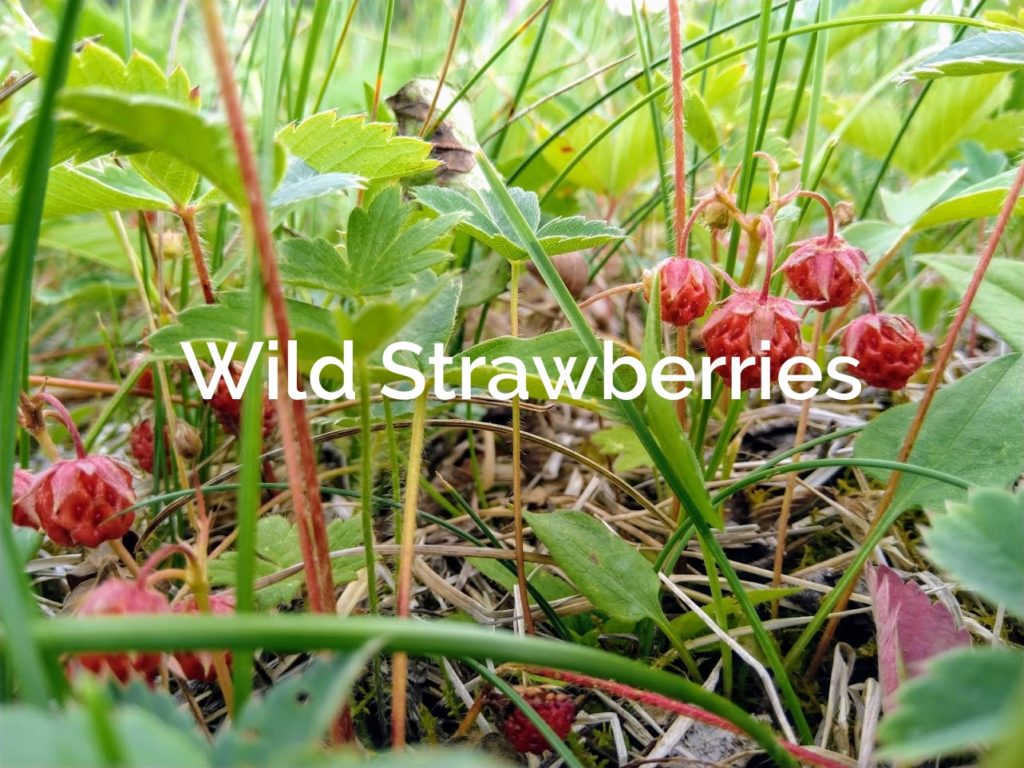
Wild Strawberries (Fragaria virginiana) – Found all over North America. Harvested during mid-summer.
They like to grow in open fields mixed with grass. You can identify them before they fruit by their small white flowers with a yellow center. Sometimes you will find small patches here and there but if you are lucky you might find an entire filed full of them. They have often been spotted often growing in grass fields that are regularly cut. They can also be found on hillsides, meadows, forest margins, trails, forest clearings. Apart from an even sweeter taste than store-bought strawberries, wild strawberries also have listed benefits to your health.
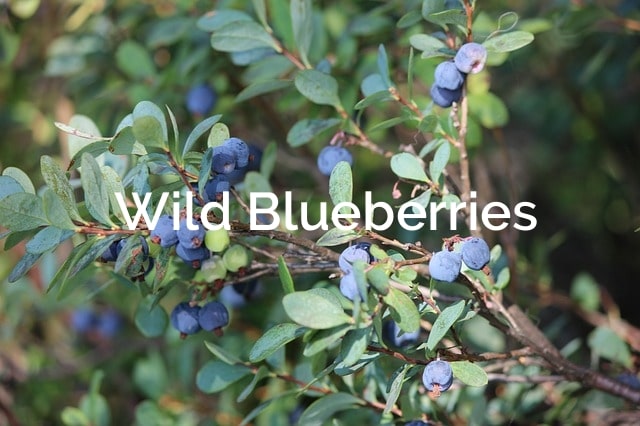
Wild Blueberries (Vaccinium angustifolium) – Found in eastern North America. Harvested during summer, best late summer early fall.
Blueberries love to grow in sandy soils, you can also find them in humus-rich soils. As a tree planter, I’ve seen them most commonly grow in recently cleared logging patches. You can find them growing around lakes and meadows. When you find a bush, there will be many others nearby. Careful of bears because they love blueberries!
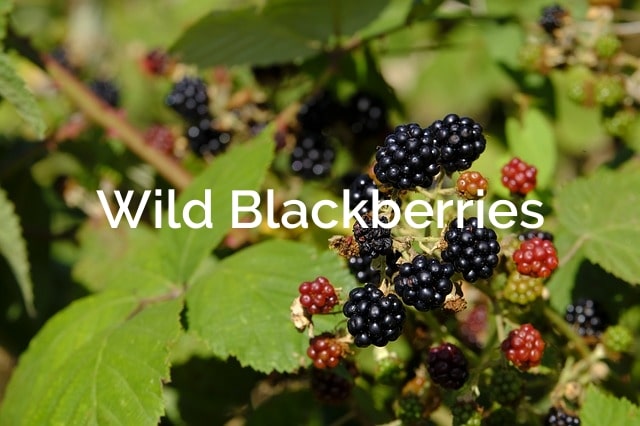
Wild Blackberries (Rubus allegheniensis) – Found mostly in Eastern North America but also grows in some parts of the west coast like British Colombia and California. Harvest time is mid-Summer.
The fruits look red before they are ripe and turn black as it is ready to eat. They grow in bunches on spiky branches. They like to grow in sunny open areas like meadows. Fence rows and forest edges are also good spots to search.
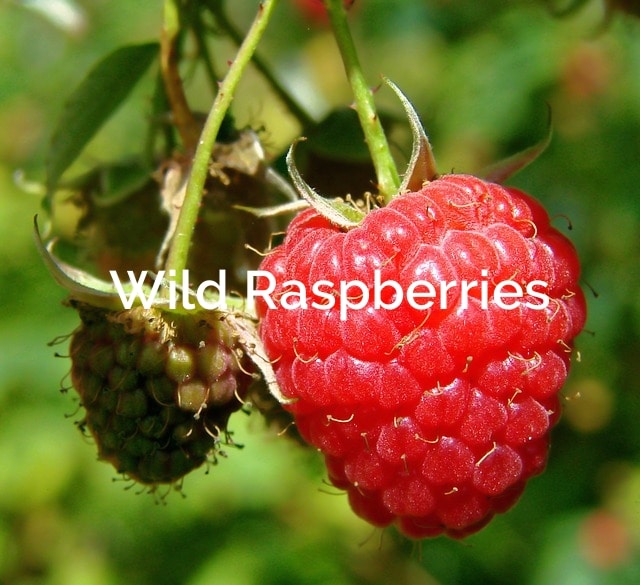
Wild Raspberries (Rubus Idaeus) – Found all over North America excepted the most southern areas. Best to harvest from July to August.
Wild raspberries often grow in large patches and the spiky bushes can grow very tall later in the season. It would be wise to make a loud entrance before you hit a patch to scare anything away that you might not be able to spot (bears or moose). The thick bushes sometimes make perfect homes for beehives so be careful. You can find them in open fields along fences or near forest edges.
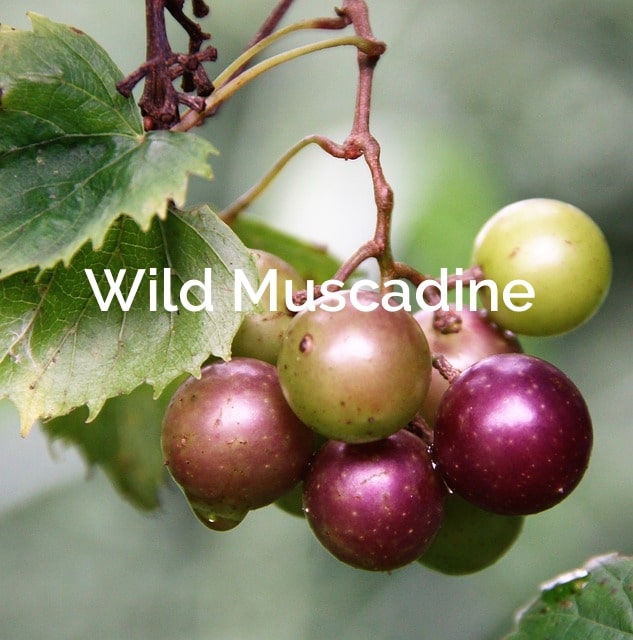
Muscadine (Vitis Rotundifolia) – Found typically in southern North America. Harvest from August to September.
Muscadines look similar to grapes except they have hard skin. Usually found on the edges of forests. They grow in vines that can hang on to trees, old barns or old equipment. Muscadines like the sunshine so the berries might be high up, hard to access. They like to grow in fertile, acidic and loamy soils.
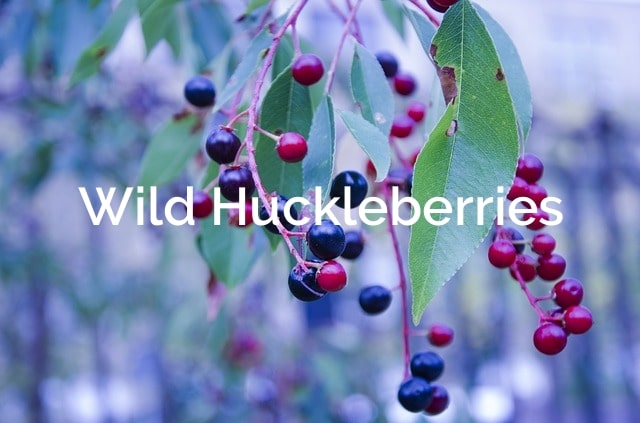
Huckleberries (Vaccinium membranaceum) – Found throughout western North America, quite far up north in Yukon and in some areas around Ontario. Best to pick late Summer to early Autumn.
They look similar to other poisonous berries so it’s important to make sure you are identifying them correctly. Huckleberries range from red to blue and black and have a flavor similar to blueberries. They often grow in clear cuts and mountainous areas. They thrive in mountainous acidic soils.
How to prepare wild berries for sale
These are the best tasting and most common berries to pick in North America but they are not the only ones, there are far more edible berries native to North America.
Of course, this forest product can just be sold fresh but if you are or know a good baker, an easy value-adding idea is to turn them into delicious jams, pies or cakes. Happy berry picking and watch out for bears!
Tree Nuts
North America hosts a good variety of nut trees, this forest product has been used since the settler’s time for food because of their nicely balanced nutritive value. Did you know nuts are actually counted as fruits? They are just a dried version of fruit with high oil content. Every nut is protected by a sturdy shell that houses the seed or fruit inside.
Collecting nuts for yourself, or to sell can be a noble pursuit. Growing nut trees in your yard are even nobler. They will feed you and generations of animals for a long time. They are a large variety of nut trees currently growing in North America, some are imported but others are our native species. This guide will focus on the North American native species, in exception to the chestnut, who was sadly wiped out in the 1900s by a fungus that made it’s way from Asia to our continent.
What you need to collect tree nuts
Trees nuts are a forest product that can’t always easily be collected. Since they can grow high up on the tree branches, having the right tools will make your life easier. Here’s what you need:
- Your tool of choice: A relatively long pole (extendable even better) with a hook.
- Pocket Knife (to hull the nuts)
- Drying basket
- A good bag to carry your nuts
Your hook will be your best friend to shake branches and collect the tree nuts that fall, it’s important to know when to harvest them too. If you harvest too early, the nuts won’t fall easily and if too late, the inner hull will have become soft, the inside fruit will be bitter. In the next portion, we will cover where and when to harvest each type of tree nut.
Where to find tree nuts
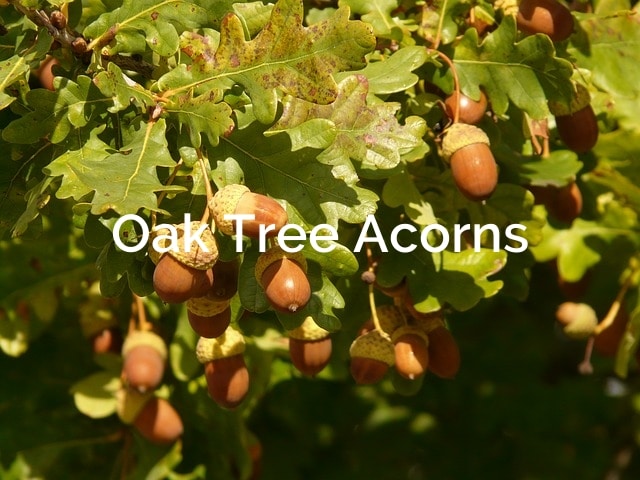
Acorns (Quercus) Acorns come from oak trees. They are found throughout nearly all of North America. Harvest early Fall for best ripeness.
While they aren’t commonly eaten anymore, acorns are edible. You can leech out the bitterness from them to make them palatable. Acorn coffee, roasted acorns or acorn brittle can be quite delicious! There is a large variety of oak trees, but the most common oak species do have certain characteristics that will help you identify them.
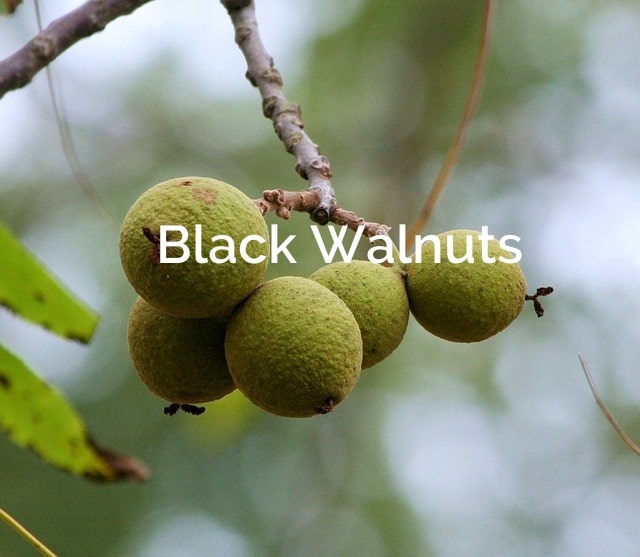
Black Walnuts (juglans nigra) – Found in eastern North America. Harvest time is October to November.
Walnut trees are prized both for their wood and delicious nuts. The sap of black walnut trees can even be used to make syrup. The bark is useful for tanning and the husks can e used for dyes. Growing these yourself or finding them in the wild can be quite an asset. In the wild, they are often found along roadsides, fields or forest edges. It rarely grows in closed forests because it requires full sun for optimal nut production.
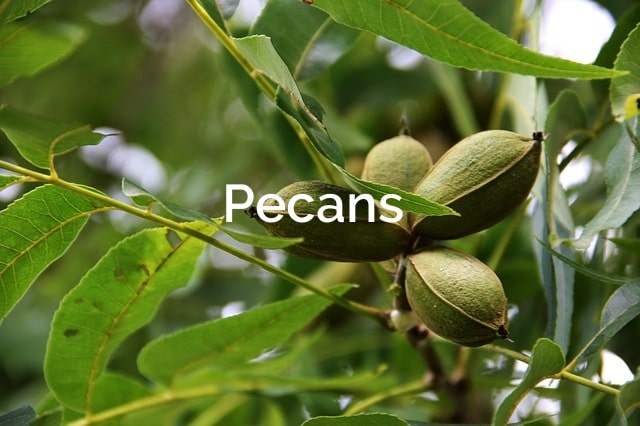
Pecan (Carya illinoinensis) – Found throughout southeastern North America. Harvest from September to November.
Relatively easy to shell and tasty, pecans have long been a staple food for native Americans and settlers until this day. Pecan trees like to grow along waterways which made them relatively easy to access. Keep in mind that with pecan trees and other nut-producing trees, some take a year off of producing nuts to store energy, so don’t get discouraged if you find a tree with no nuts. Weather conditions like drought will also affect the output of nuts, so generally, you get good years and bad years.
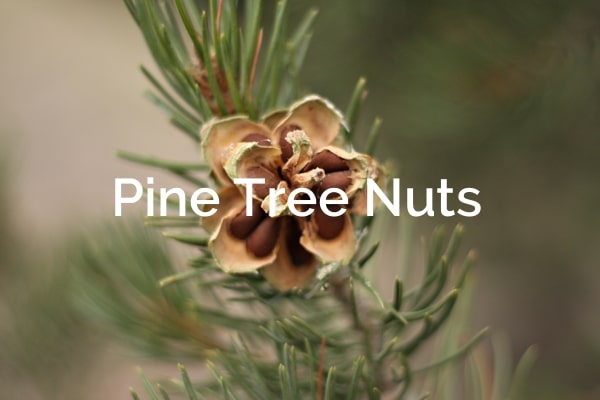
Pine Nuts (Pinus edulis) – Found in Southwestern North America. Harvested when the cones are large enough and open.
Who knew pine created edible nuts? It’s true, they are quite tasty and can sell for a small fortune. The seeds are not easy to harvest which results in high sale price. If you have enough patience, it can be a rewarding venture. They like to grow in high altitude mountainous areas. They will grow quite abundantly and create vast woodlands.
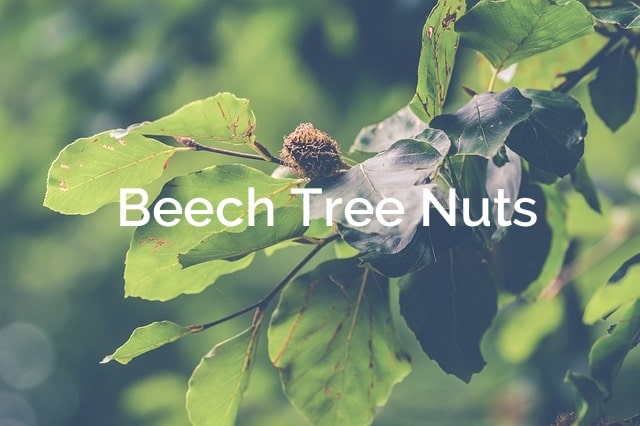
Beech Tree nuts (Fagus grandifolia) – Found in almost all of eastern North America. Harvest from September to October.
Beech trees like to grow on rich upland soil. They are often found on upland ridges. Beechnuts have a spiky hull, it would be a good idea to wear gloves when harvesting them. Foraging beech nuts is a skill on its own, one should be well informed before taking it on seriously.
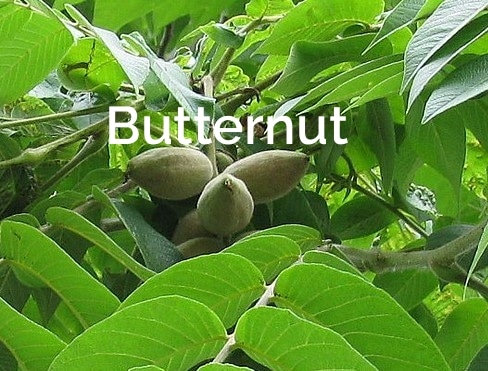
Butternut (Juglans cinerea) – Found in Eastern North America. Harvest during Fall.
They have an outer skin that is hard during most of the season, a good way to tell if they are ripe to hull is to check if you can make a dent in the skin with your fingernail. Butternut trees or white oaks can grow in a variety of soil types but they are quite susceptible to fungal infection. They like to grow in middle elevation areas.
How to prepare tree nuts for sale
Nuts are a power food, they are tasty and can sell for quite a good amount of money. The hard part with nuts is the shelling. Although not everybody wants to buy shelled nuts, some prefer unshelled because it gives them something to do with their hands while eating.
Shelled nuts are worth more though, learning how to shell them is important if you want to maximize profits. The difficulty here is that there is no universal method for shelling nuts because they all have different shapes, sizes, and compositions. I saved you the research and provided links below to shelling guides for each mentioned tree nut:
- How to shell acorns
- How to shell walnuts
- How to shell pecans
- How to shell pine nuts
- How to shell beech tree nuts
After you have them all shelled you can either sell them like that or maybe do some value-adding by roasting them, making pies or coffee. Happy tree nut picking!
Wild Seeds
Collecting wild seeds, knowing where to find this forest product and what seeds are valuable is an important asset while you trek through the forest. The more you know, the better right? Then you can make your trip more valuable.
If you have ever wanted to grow your own plants, herbs or trees at home and didn’t have access to the seeds. You know that online is the first place you looked! Keeping that in mind, we can see that collecting good seeds and selling them online is a feasible way to earn money.
It can actually help the species survive, as long as you don’t take all the seeds because someone somewhere will attempt to grow it at home. While collecting them, why not plant a few yourself too? I see collecting wild seeds as rewarding, profitable and wholesome. What’s not to like?
How to collect wild seeds
The Cherokee had a rule of thumb for collecting wild seeds. It’s called the rule of four: Only collect wild seeds of a plant or tree you passed at least 4 times. On the fifth, make an offering to the plant or tree and ask it permission to give you some of its seeds. I think this little ritual neat and can put things into perspective. This way when you do collect, you only disturb one-fifth of the species’ population. In fact, this is a good rule of thumb for almost any forest product.
Understanding how the plant, tree or flower you’re after reproduces is also important. Some don’t rely on their seeds to reproduce while for others this is the only way. The frequency of your harvest also affects how the plant itself will react. Sites that were harvested for seeds on a 3-year cycle were less affected than sites harvested annually.
Where to harvest wild seeds
The vast majority of plants, flowers, and trees have seeds which means you can collect wild seeds anywhere you go. It’s just about knowing where the seeds are and how to get them. Here are the main places to find the seeds:
- The fruit: Inside the fruit, you will find a good number of seeds. A good way to collect them is to put a tarp underneath the bush or tree and gently shake it, then you can easily accumulate the fruits.
- Seed heads: Clip off or strip the part of the plant that holds the seeds. Or tie a cloth around a seed head and gently shake, loosening the seeds into the cloth.
- The forest floor: Seeds will drop directly under the bush or tree, it can be time-consuming but there’s no damage to the tree or plant.
How to prepare wild seeds for sale
Every seed is unique in how you should store or prepare it for sale. A good place to start to inform yourself on the specifics for each is the native plant network.
For a start, they should be stored in a cool dark place, in a little paper or cloth bag. Forest products like seeds can be sold online on any market like Ebay, Amazon, Alibaba, Facebook groups, Kijiji, etc.
Forest Tea
Did you know there are tea species that grow naturally in North America? They are quite tasty and some even have medicinal properties.
Speaking from experience, these teas are easier to harvest if you cut a piece of the stalk off the top. The stem also contains the properties of the leaf which means you don’t have to pick them leaf by leaf. In the end, it makes steeping a lot easier because you can just throw a bundle in your cup and add water.
I specify the top of the stalk because we do want them to continue growing. They usually grow in large patches but to be sustainable we should only harvest a portion of the patch at a time. This way we can return year after year.
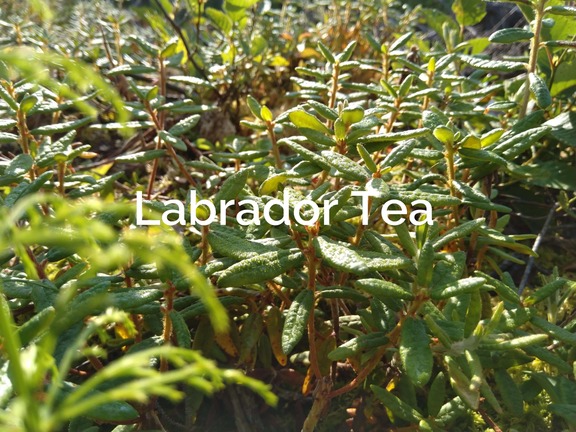
Labrador tea (Rhododendron tomentosum) – Found only in Canada and Greenland. During late Spring the new leaf growths are white and fibrous underneath. As the season progresses the fibrous part turns into a rusty color. Grows around peat bogs.
The flavor is unique on its own, you have to taste it to see! Personally I love it. It’s said that labrador tea has medicinal properties. It helps relieve symptoms of the common cold, asthma, and if turned into a salve it will treat burns. Some say labrador tea has side effects when consumed in large quantities, but I personally have had this tea in different dosages for almost a year with no side effects. Labrador tea can be found in mossy wet areas, it will grow best where water will accumulate naturally.
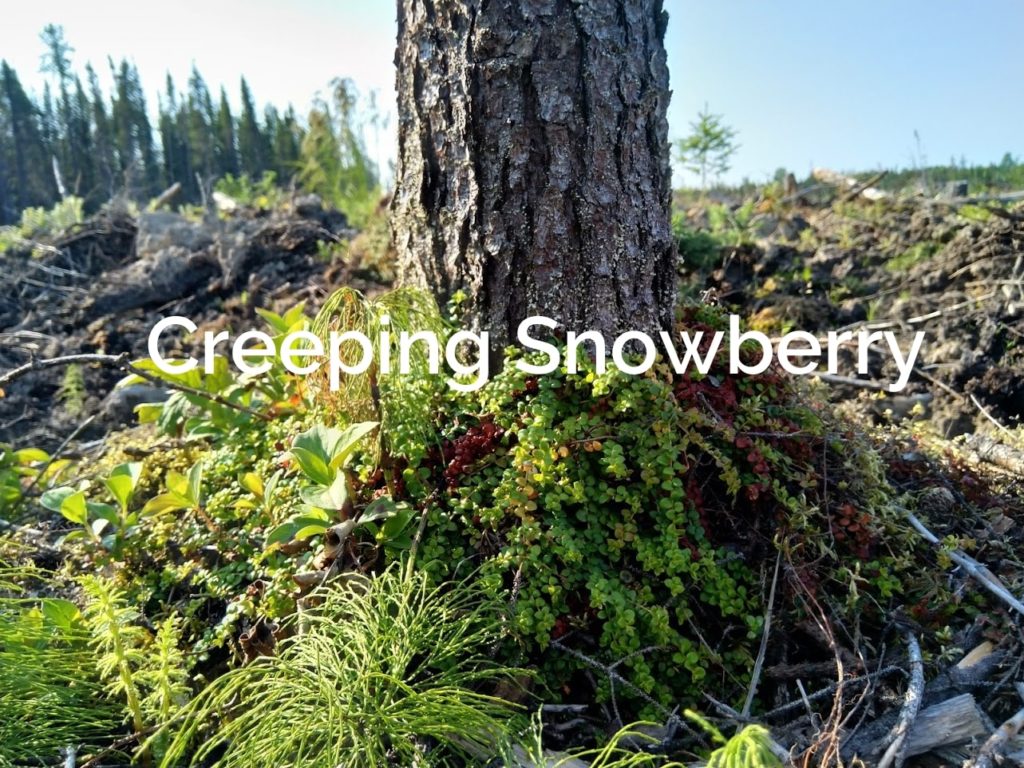
Creeping snowberry (Gaultheria hispidula) – Found in Northern North America, mostly in Canada and some States near the border. Grows around bogs and wetlands.
This is a little tea that likes to grow along the ground in wet areas. It will grow along with moss near bogs and tree stumps. It likes acidic to neutral soils. It’s often seen in forest clearings or recently logged areas. While planting trees in Northern Quebec I saw many of these. The tea has a mix of a minty and cinnamony flavor and the plant also has edible white berries.
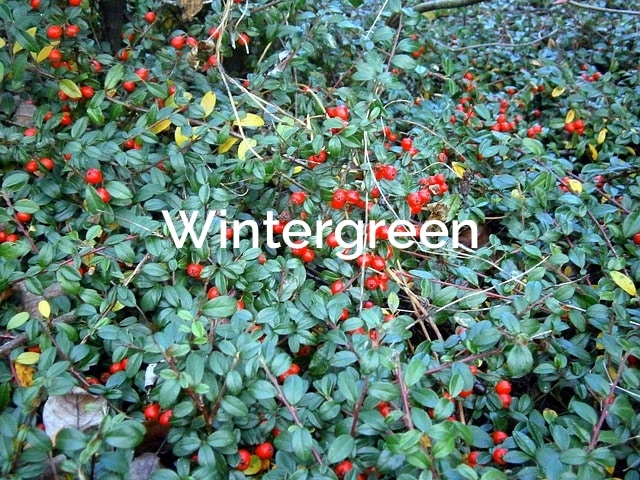
Wintergreen (gaultheria procumbens) – Found in Eastern North America. Harvested early summer for fresh leaves. Grows in shaded, rich peat type soil. Commonly found growing with moss around bogs.
Wintergreen leaf is said to contain an aspirin-like chemical that helps reduce pain, swelling, and fever. Infuse it into a tea to get the desired effect. Wintergreen tea has a strong minty flavor and the plant also has edible red berries.
How to prepare forest tea for sale
After the tea is picked, it needs to be dried. If you don’t dry it quickly, it will start to grow mold and decompose. For something you plan to drink, this is especially important.
A good way to dry them is to spread them on a container and leave them out in the sun. From my experience, it can take from 3 days to a week to dry. It’s not a bad idea to cover the tea with a net to avoid dirt and bugs from getting in.
I prefer to keep the leaves on a branch instead of picking them apart and crushing them, this way it’s easy to steep. If you’d like to package them in tea bags then grinding is the way to go. If not, a good idea before you sell is to put the leaves in a tin can or a glass bottle to preserve the freshness. These forest teas are good on their own but mixing them is where the money is at. The trick with forest products is value addition. Making mixes with fruits or other herbs could create new combinations of flavors never seen on the market. Happy tea picking!
Honey and Beeswax
Bees are currently on the endangered list and their numbers are dropping worldwide. Because of this, I wouldn’t recommend going after honey as a forest product but instead starting your own honey farm. Let’s learn how we can steward honey bees, help them proliferate and make use of their delicious honey.
It is good to know that the relationship between humans and honey bees is symbiotic, we do not harm them from taking the honey. If you live by the edge of a forest, this will be the best-case scenario for starting a honey harvesting operation.
Honey bees thrive around certain plants, trees, and flowers. Depending on your geological location, there are specific species of plants, flowers, and trees you will want to cultivate. For example in areas such as the central U.S., you will want black willows, red maples, American basswood, blackberry, hawthorn, Sumac, etc. You can find a detailed list in this permaculture blog by Doug Crouch.
How do you harvest honey? What is a commercial hive?
A commercial hive is just a container to keep bees inside, and good, serviceable hives can be made from many different materials. The purpose of this hive is to encourage the bees to build their nests in a way that makes it easier for the beekeeper to manage and maintain. Depending on your situation, you may find a style more convenient than another. For the honeybee, it is only concerned to have a safe place, large enough for the whole colony and its stores, and protected from unfavorable weather and predators.
How much honey can a hive produce?
The volume of honey harvested from a colony is decided by the forage for bees that is available in the area, and the strength and needs of the colony. As long as the hive is of large enough volume, bees will store as much honey as they can.
What equipment do I need?
To start a proper honey harvesting operation, you will need certain tools and equipment.
- A Smoker: (to calm the honeybees) and harmlessly move them from one part of the hive to another.
- Protective Clothing: You will need a broad-rimmed hat with a veil to protect your face and neck from bee stings and a good suit to prevent them from entering your uniform.
- A Hive tool: Used to pry the beehive lid off, to remove the bur comb, to separate supers or boxes, to remove debris off the floorboard, to loosen some hive components such as frames, and to scrap out stings.
- Hive Stands: Used to protect them from predators and makes it easier for you to work with the hives.
What materials do I need to build Hives?
There are 3 types of hives:
- Fixed comb hives: Built with clay, walls, logs, bark, and more.
- Movable comb hives: Top-bar hives
- Movable frame hives: Langstroth, Dadant, Adz, National, Smith, WBC, etc.
How do I choose where to start my honey farm?
You will need to look for certain characteristics in the area where you will start. Here are the top 7 traits to look for in your beehive location:
- You can find flowering plants and trees nearby.
- Far away from pesticides, check the surrounding lands for farms.
- Water sources nearby such as a pond, lake, river.
- Protection from heavy wind, like a forest or tree row.
- Protection from strong sunlight, you will need some shade.
- Keep your hives in not so evident areas to keep thieves away, you don’t want vehicles passing by and making the bees defensive.
- Protection from overhead water dropping from branches, this could drown the hives.
How do I obtain my bees?
One way to obtain your bees is to go to a local beekeeper and negociate. If not you can try to find a wild honeybee hive and transfer it to your hives. Lastly, you can rub the inside of your hive with beeswax to give it an attractive scent, and if your area is densely populated with bees, there is a chance you will attract a passing swarm.
How do I harvest Honey and Beeswax?
It’s time to harvest honey when the flowering season ends. You select the combs that contain ripe honey, covered with a fine layer of white beeswax. If you see any combs containing pollen or developing bees, do not disturb them. The honeycombs are cut into pieces and sold as fresh, cut-comb honey. You can also break up and strain the honeycomb through muslin or another form of filter to separate the honey from the beeswax.
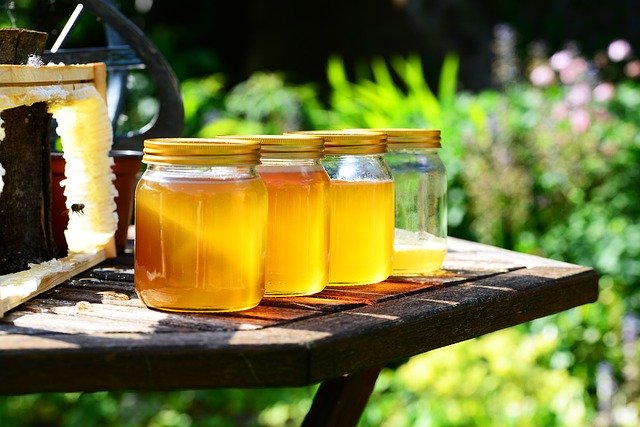
When you separate honey from the combs, you will be left with beeswax. The beeswax can be melted gently (over water) into a block. Beeswax does not deteriorate with age, so the best practice is to save up your scraps of beeswax until you have a sufficiently large amount to sell. We’ve learned the essence of how beeswax is harvested but to truly get started you will need a more detailed guide, luckily wikihow has an amazing beeswax harvesting guide.
Managing a beehive is not a simple task, it requires knowledge and guts. A good way to start is to find local bee farmers in your area and ask for tips and tricks. You can also get heaps more information about forest honey and honey farming in this great Honey hunting and beekeeping guide.
How do I sell my Beeswax?
We’ve learned the process of harvesting beeswax, but how can we really sell it? It’s all good to learn the process of harvesting NFTP but what’s the use if we cannot sell them for profit. In this next section, we will look into the way this NTFP can be sold.
Who buys beeswax?
Beeswax can be sold to crafters, it can be used to make lip balm, lotions, candles, soaps. Depending on the product they make, they will require the beeswax in a different form. Before the beeswax can be sold, it needs to be prepared for sales.
How do I prepare beeswax for sale?
The first thing to know is that bees produce wax to create the structure of honeycombs, which holds the honey and the newborn bees. Bees consume honey to create wax from a special gland in their abdomen and then construct the walls of the hive with it. The process isn’t instant which means impurities make their way into the wax. Wax needs to be as pure as possible for sale which means you will need to remove the impurities. Components like dirt, honey, propolis, cocoons, and other impurities need to be removed.
The purest form of wax is found on the cappings. Honeycomb caps are the lids or walls that seal the honeycomb. In the entire hive, this is where you will find the wax with the least amount of impurities. These lids have to come off anyway to harvest honey from the combs, might as well keep the wax, it has value! And if you harvest only the caps, the bees can reuse the comb structure next year, which means your honey bees won’t have to work as hard to build new combs.
While cappings are the purest form of wax, they still retain honey. You will need to separate the wax from honey. It’s simple enough you need to place it on a rack and let the honey drip into a container. Next, you need to clean it:
- Rinse the beeswax in cool clean water (after you drained it from honey)
- Melt the beeswax, you can use hot water but you will need a filter.
- Pour the hot water and beeswax solution through a filter (a piece of clean cloth will work like cheesecloth or nylon.)
- Let the wax cool in a flexible container with the shape of the wax you want.
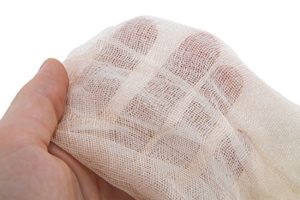
When hives get too old, bees will start a new one. At this time you can harvest the combs, but it’s not as easy. If you are advanced enough and interested. There is an in-depth guide here at caronila honeybees.
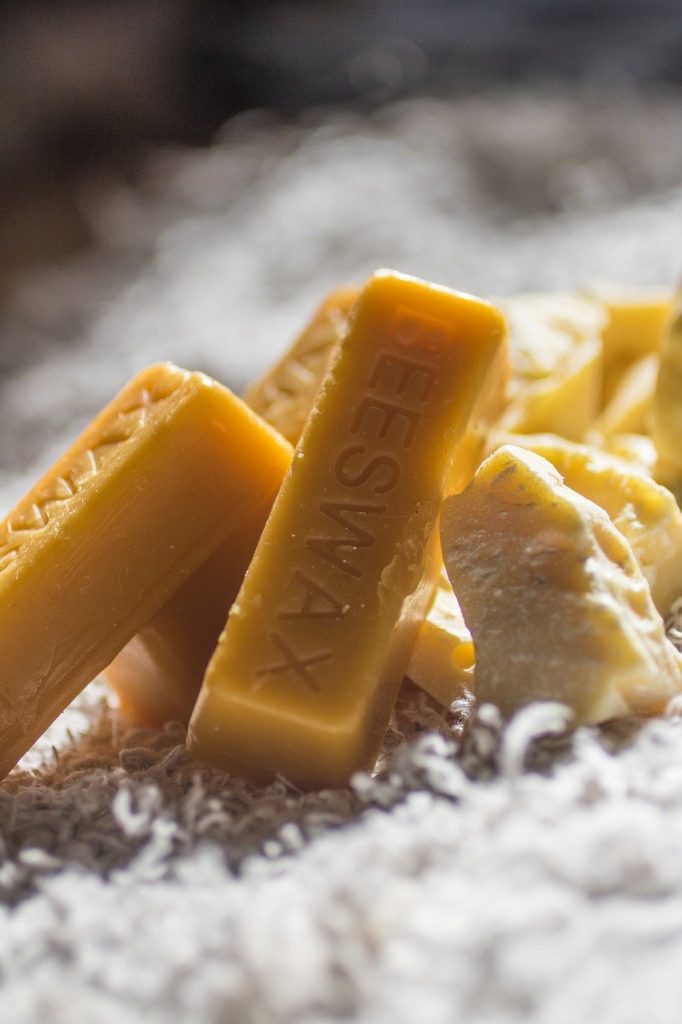
Once the wax has cooled, you can pry it out of your flexible container. You will have yourself a nice block of pure beeswax. Now it’s ready for sales, time to look for buyers.
Where can I sell my beeswax?
Here are the best places you can sell your beeswax. There is a considerable demand for it which means it shouldn’t bee too hard. It’s all about being in the right place, where you know there is demand.
- Crafter Fairs
- Flea Markets
- Vendor Fairs
- Etsy (create a store)
- Commercial companies, if you have enough volume
- Facebook groups (you can find vendors and buy and sell groups)
- Kijiji, Ebay, Amazon, Alibaba.
Well done! That first sale will always be very satisfying. Knowing you helped bees flourish, provided supply for a market that creates an organic, eco friendly product, had a great time and earned money. Great deal if you ask me.
Gathering Non-Timber Forest Products to Make Money
The ability to make money with non-timber forest products has always been underestimated. Truth is NTFPs have helped people, especially the rural populations to earn a living.
What should be understood is that the NTFPs sector is highly dominated by the people living in the rural areas and labor-intensive small-scale industries. There are so many ways to use forest products to make money. It all comes down to the type of NTFPs that are available in the region and the skills available that people possess.
Learn about value addition
In countries where this is still common, the rural populations are usually crowded with people who only act as collectors of the various non-timber products in the forest. For instance, people in Asia can be involved in collecting various medicinal plants and then bring them to various companies that have the capacity to perform value addition.

Such kind of people may earn some income, but not as much as the company that is performing the value addition and then selling their final products at very high prices for large profit margins.
Having the capacity to perform value addition to various NTFPs is very critical to maximizing the amount of money one can make with any non-timber products found in the forest. For instance, artisans who are able to use bamboo to make finished products like chairs and tables are able to make more money. Their skills, besides, just collecting forest products, help them to do value addition and produce final products that will be loved by many people, even in the urban areas.
The sustainability of NTFPs
The sustainability of the non-timber forest products revolves around harvesting, gathering, usage, and management of these resources within various set ecological, economic, social, political, institutional and legal frameworks.
The society has a role to play in the management of resources. Here the society should consider the significance of culture, indigenous knowledge, and social ethics when it comes to harvesting and utilization of various non-timber forest products. Different social institutional arrangements, in various regions, have come up with certain guidelines that will safeguard and prevent the overexploitation of various NTFPs.
Laws to stop overexploitation
Overexploitation of certain forest products such as excessive hunting of various animals for fur and bushmeat has led to certain species facing extinction. For instance, due to the excessive hunting of various animals in Viet Nam, certain species are facing extinction. This prompted the establishment of a law that requires one to have a permit in order to hunt. Other laws have been established to limit the sales and exportation of other species.
Without the necessary laws and social ethics, overexploitation of various forest products could happen. This could lead to high scarcity levels of the various non-timber products, which, in turn, will result in loss of biodiversity and loss of livelihoods for many people.
The dynamics ecosystem forms the basis for resource management. The resources should be managed in a manner that minimized ecological destruction. If that does not happen, biodiversity might be lost, yet we need it.
Organic farming at home
Today, people can help ensure the sustainability of NTFPs. There are people who engage in the practice of planting various medicinal plants along with other trees in their own gardens. This is quite a good practice because people will reduce the exploitation of non-timber forest products in the forests. Such people tend to be careful about the harvesting and utilization of their products.
Many people in rural areas can make a living by selling NTFPs, hence they will not need to involve in more environmentally destructive activities. It is believed that if people can have increased income from the trade of NTFPs they are highly likely to protect their forest and manage it sustainably.
Follow principles when you harvest from local forests
Harvesting non-timber forest products must follow certain harvesting principles. The harvesting methods and levels employed must be appropriate to the species or species group. Additionally. They should be based on scientific and local or indigenous knowledge. As a matter of fact, the indigenous and traditional methods are most preferred and they ensure sustainable harvesting.
Harvest with sustainability in mind, add value to your forest products, give back to the forest in any way you can (#trashtag maybe?) and last be not least, don’t forget to have fun!

Want to know other eco-friendly ways to make money? Check out our Tree Farming Guide.

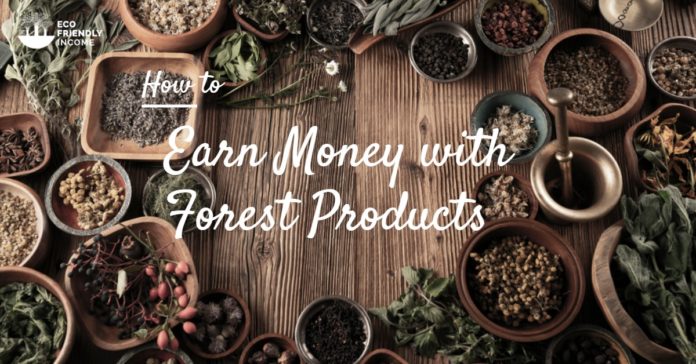
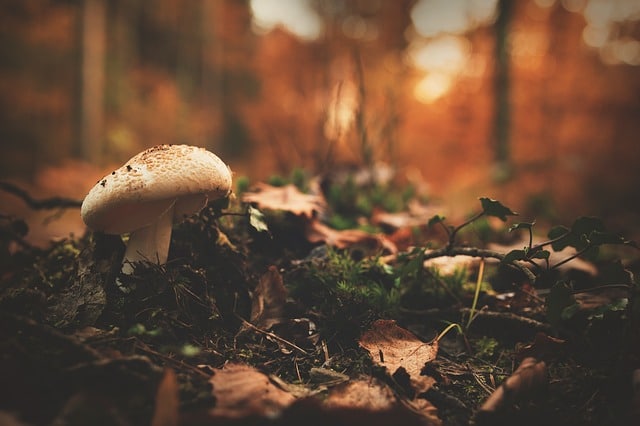
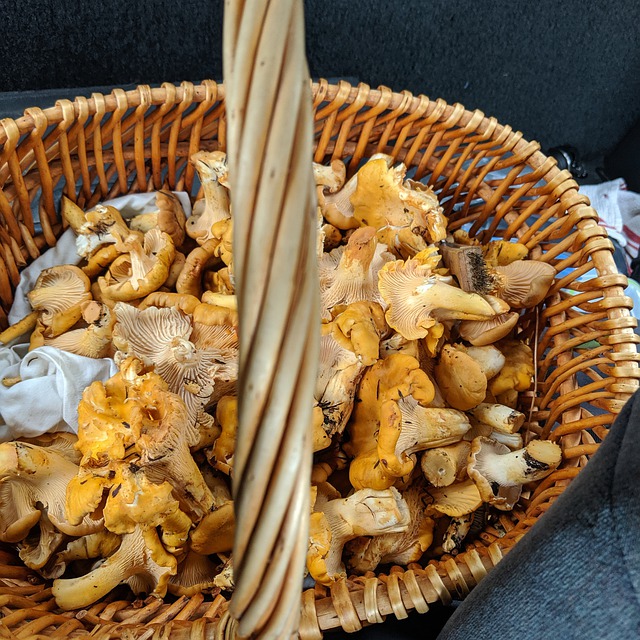
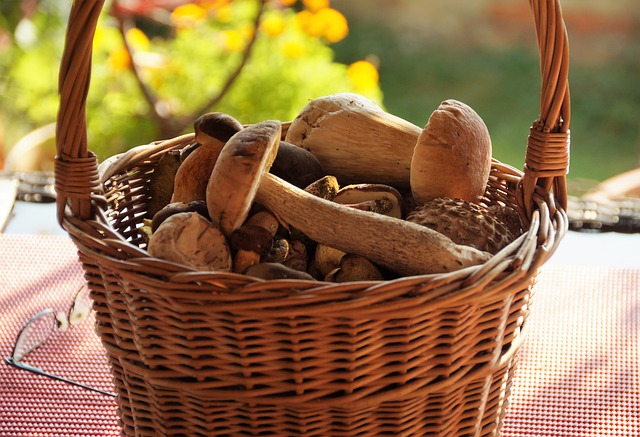
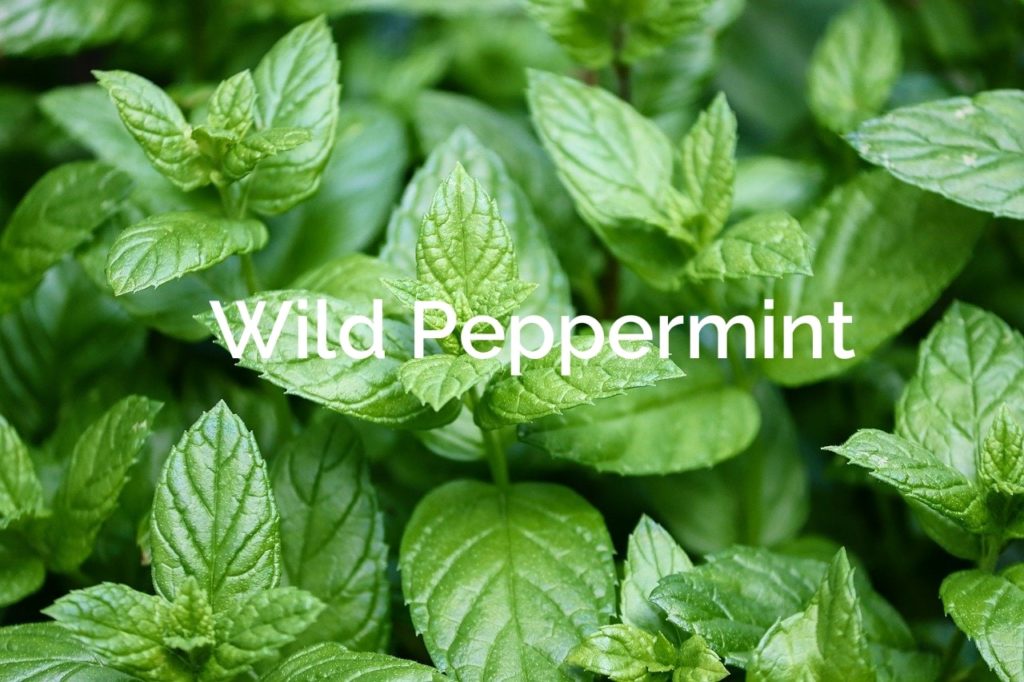
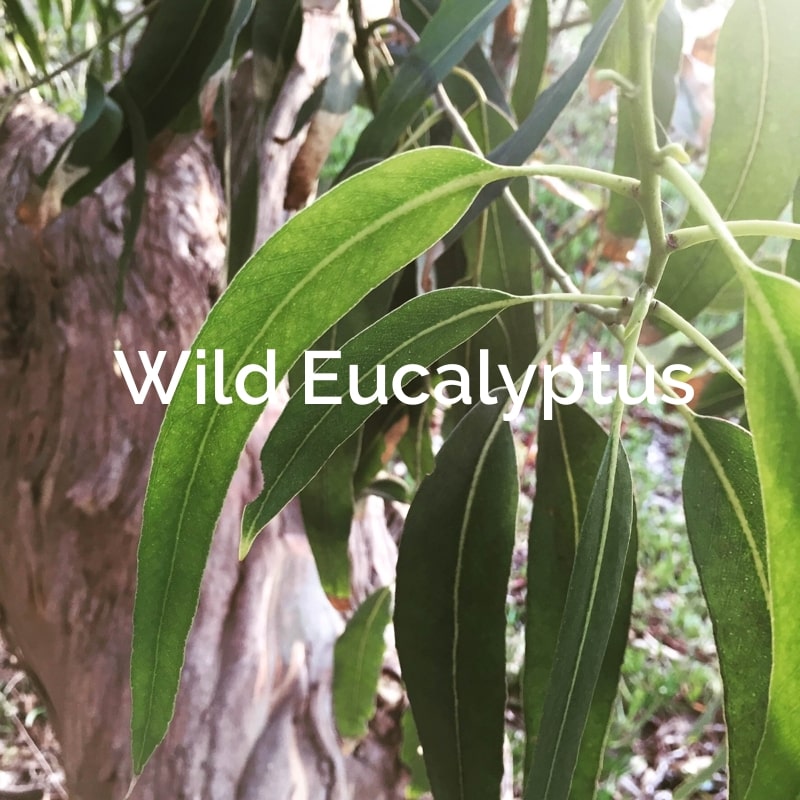
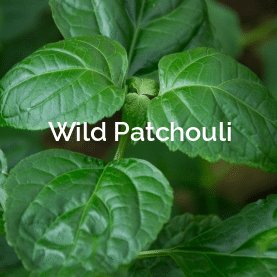
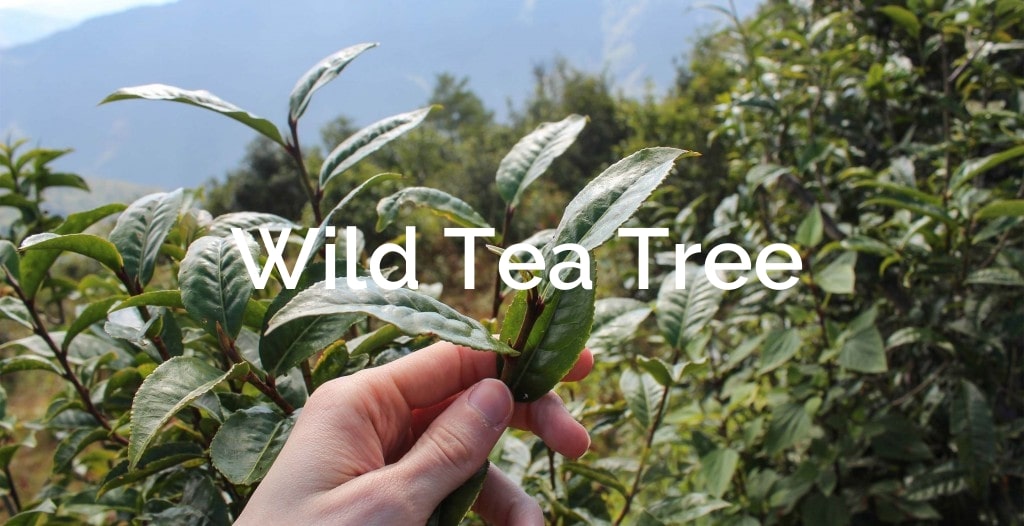
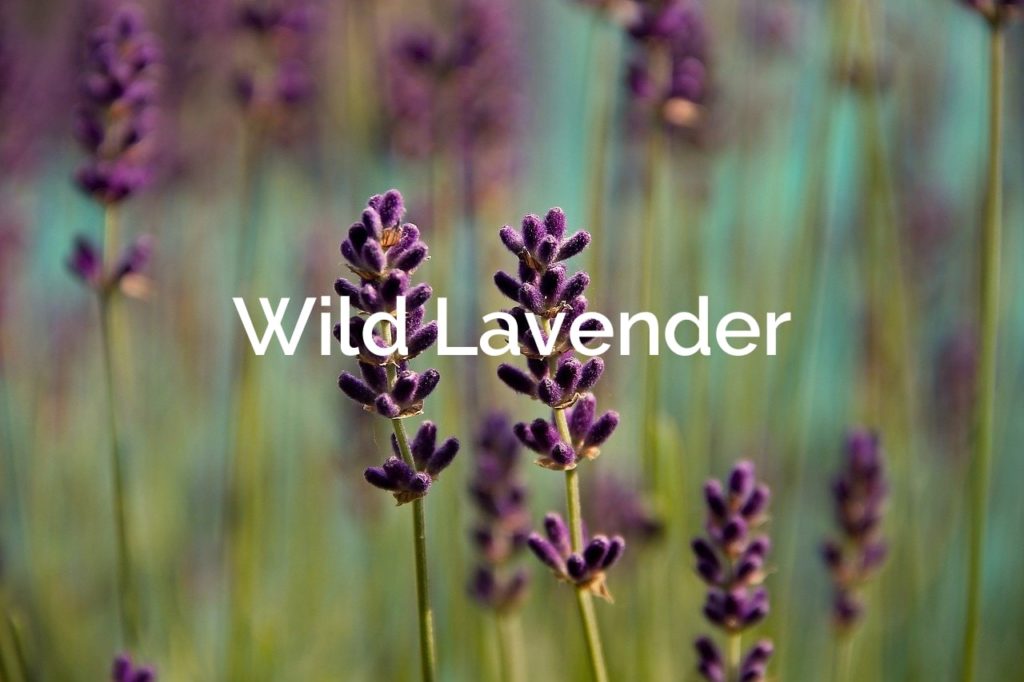
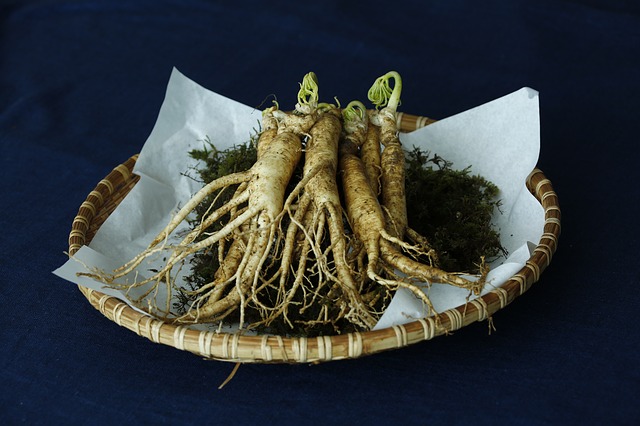
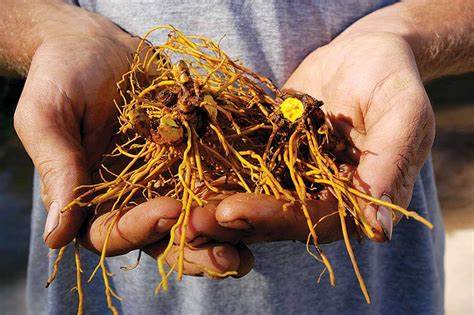
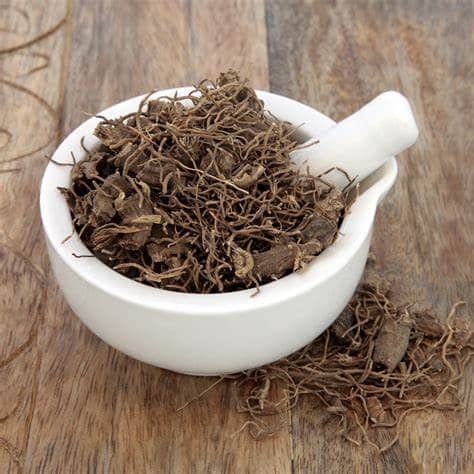
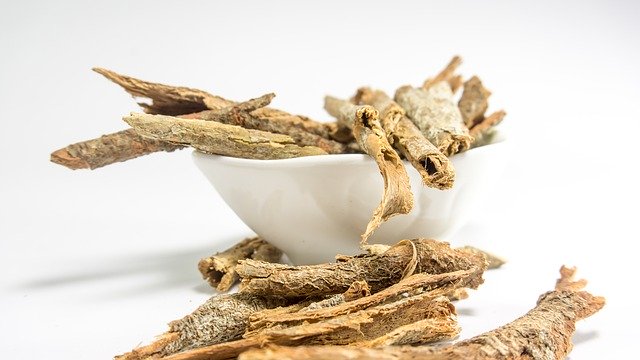
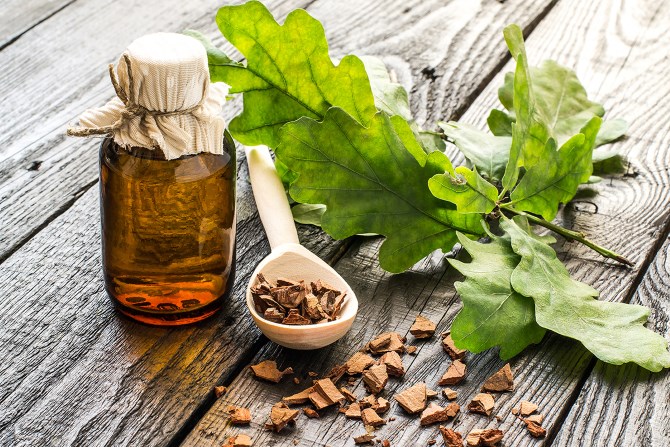
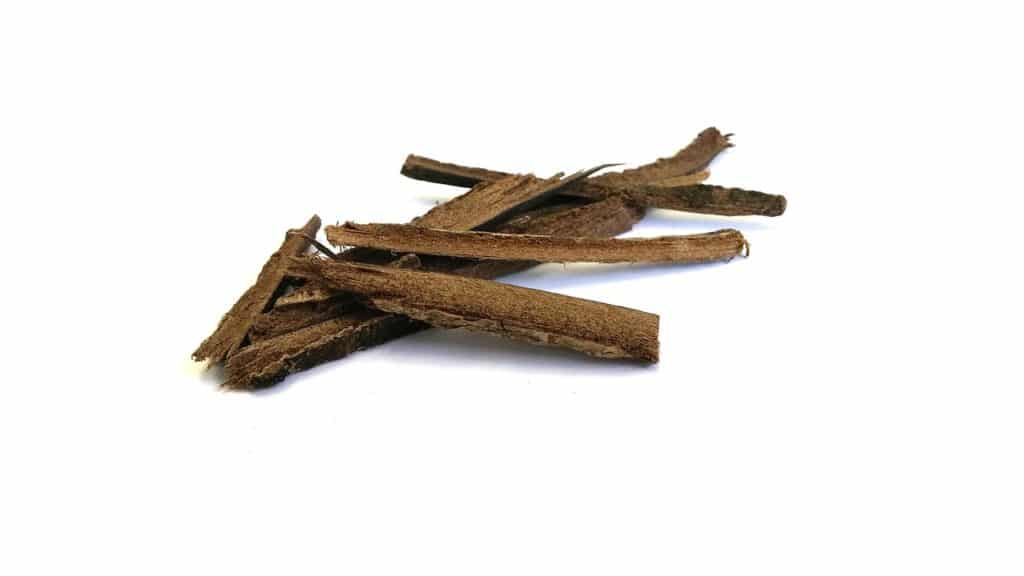
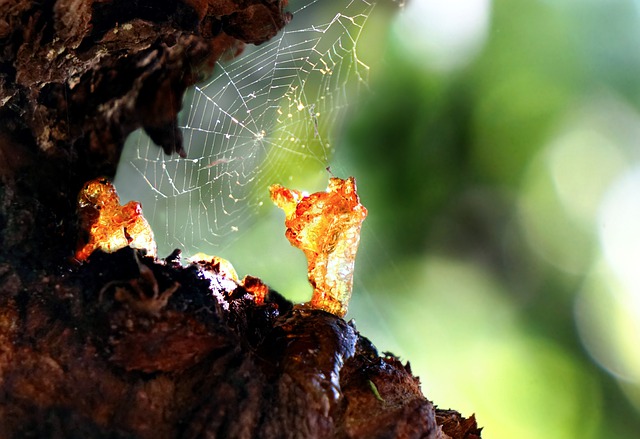
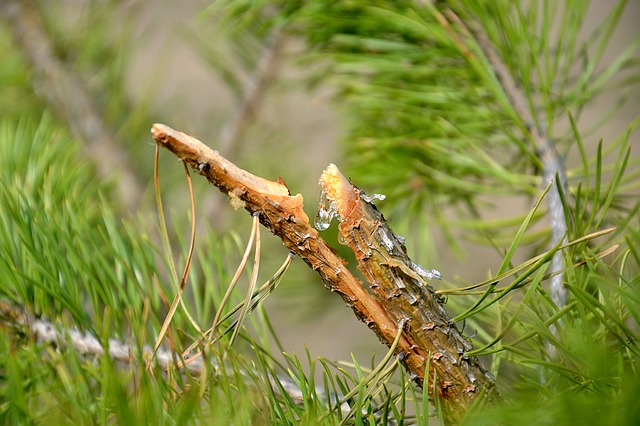
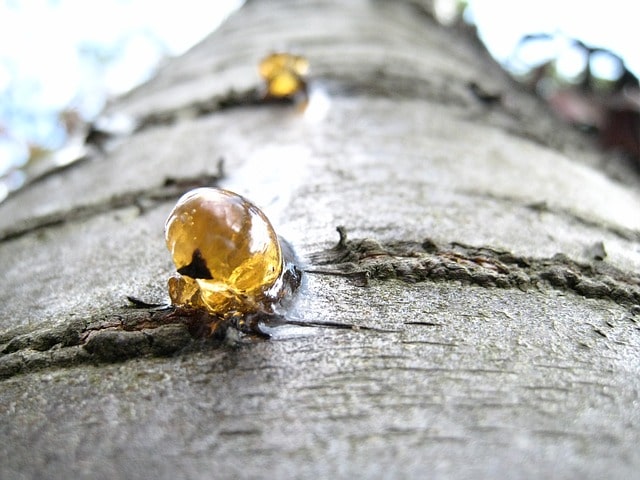
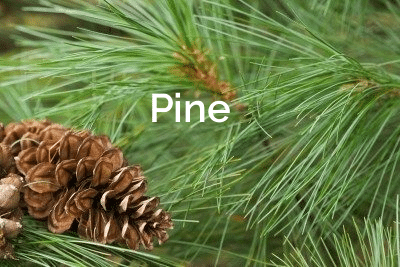
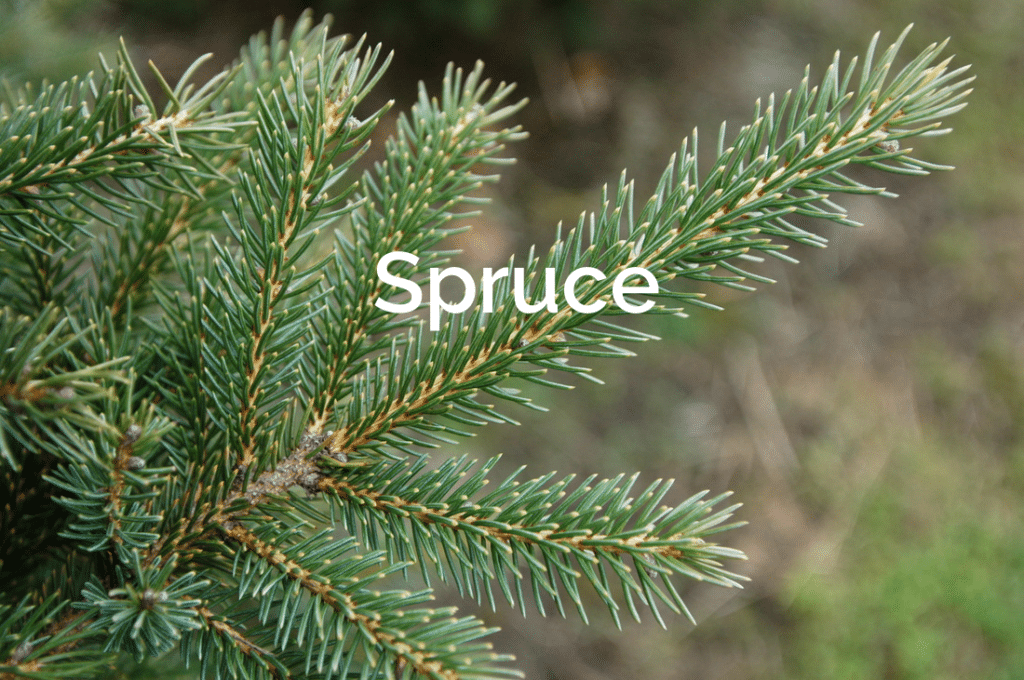
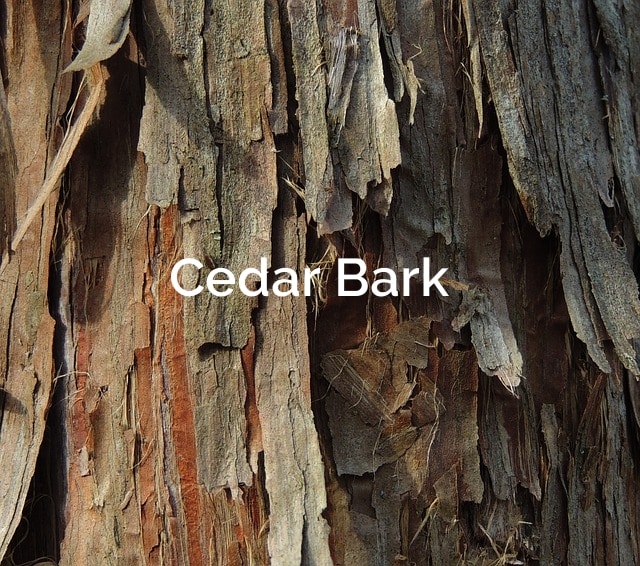
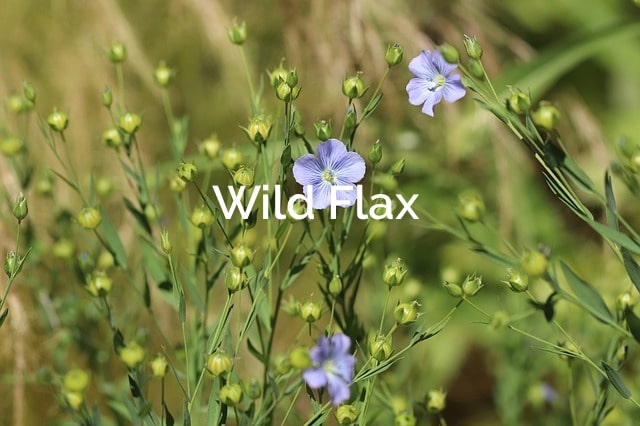
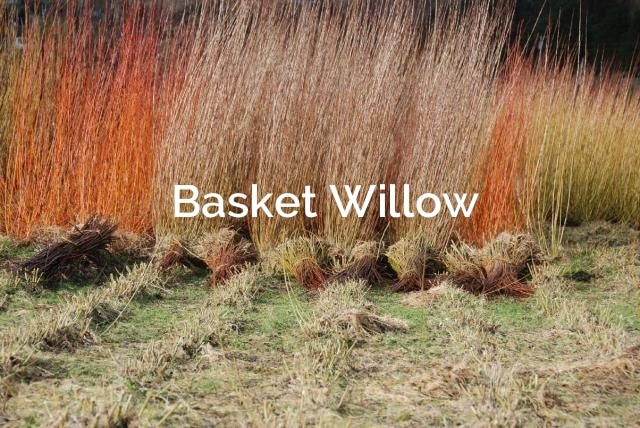
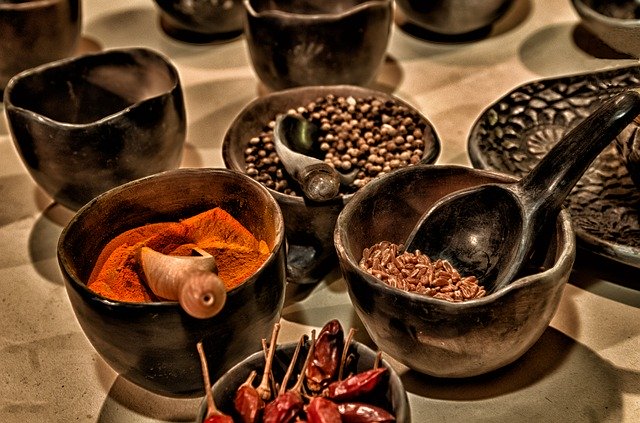
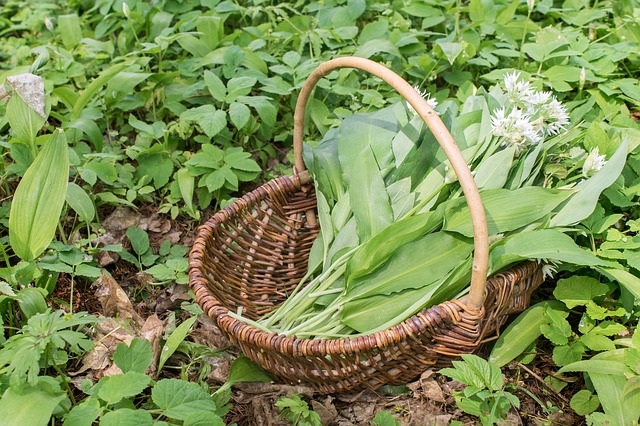

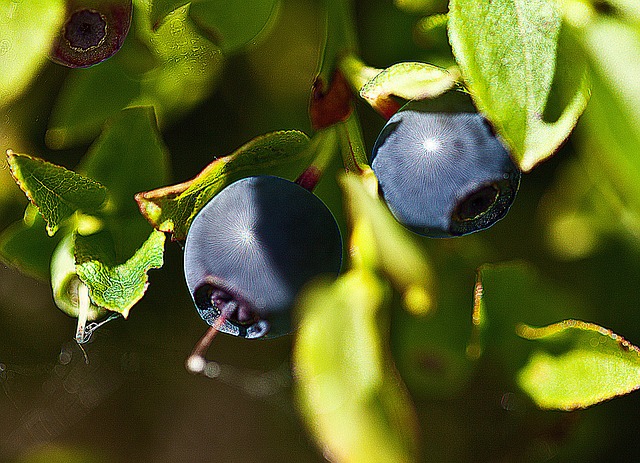
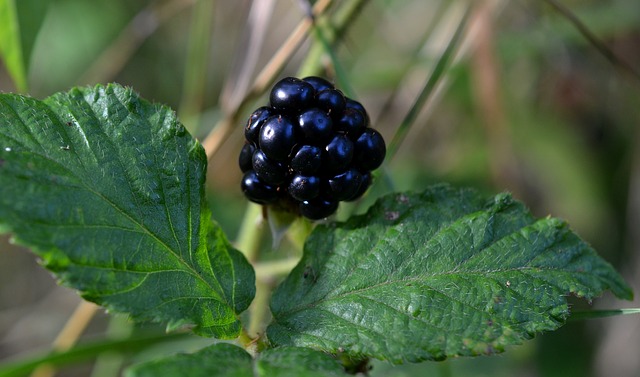
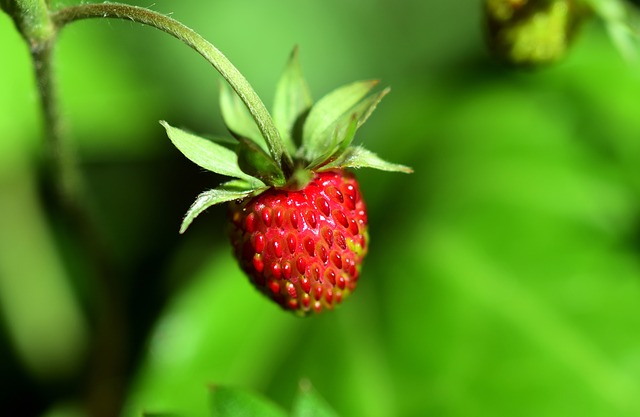
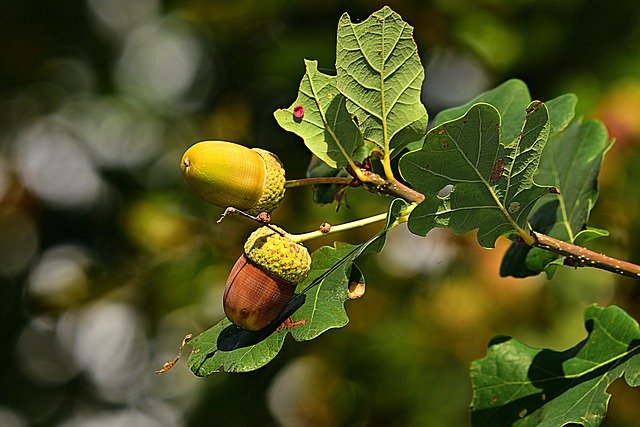
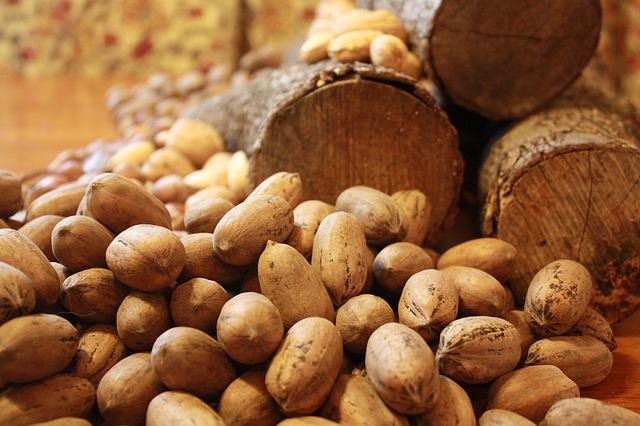
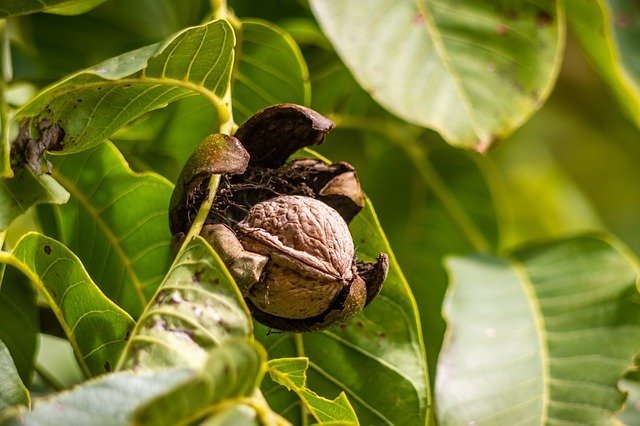
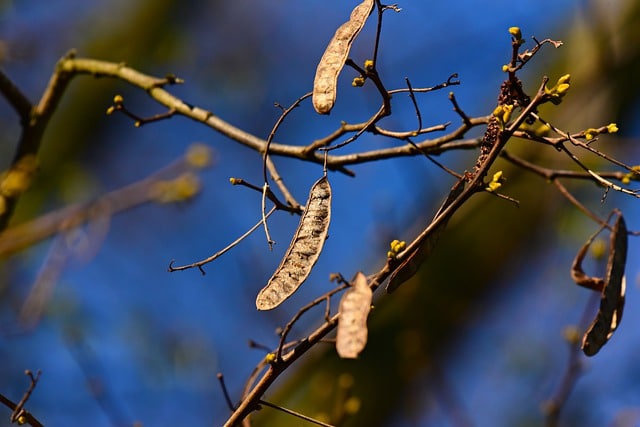
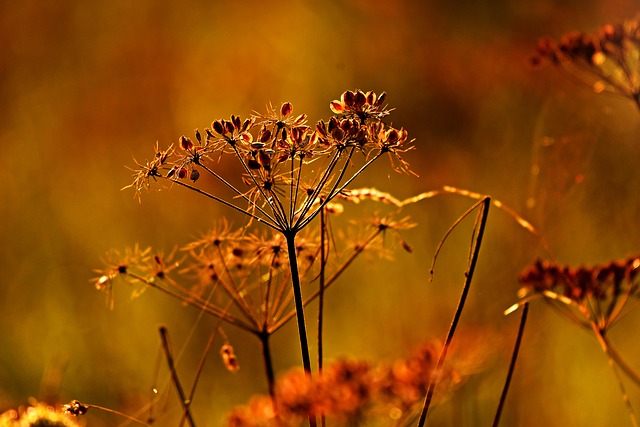
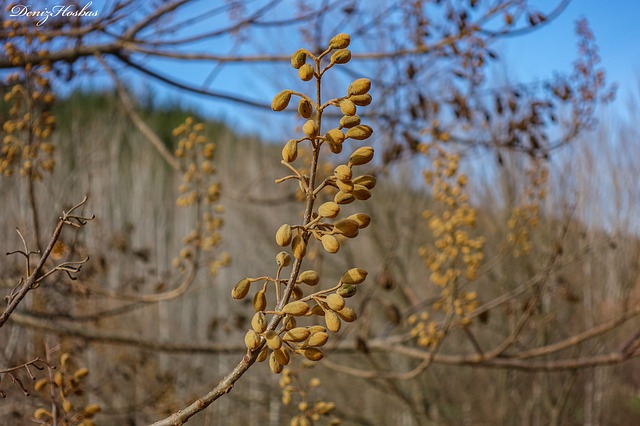
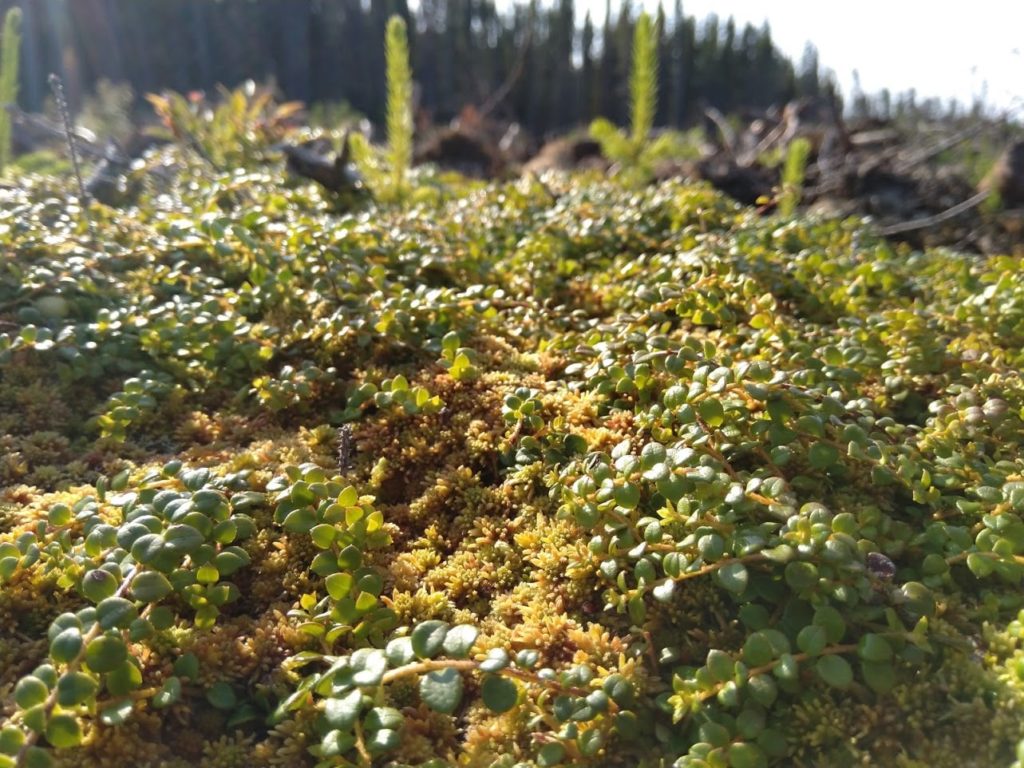
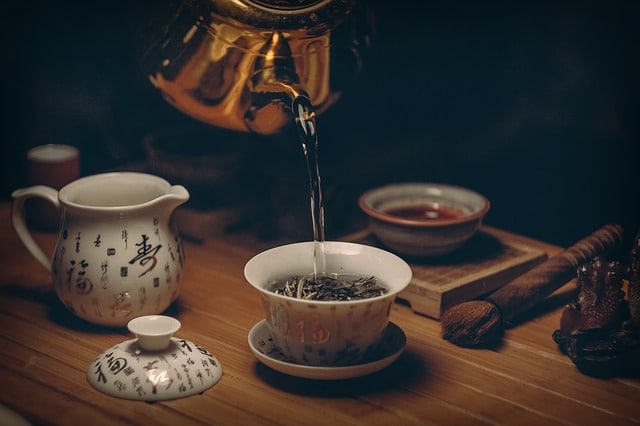
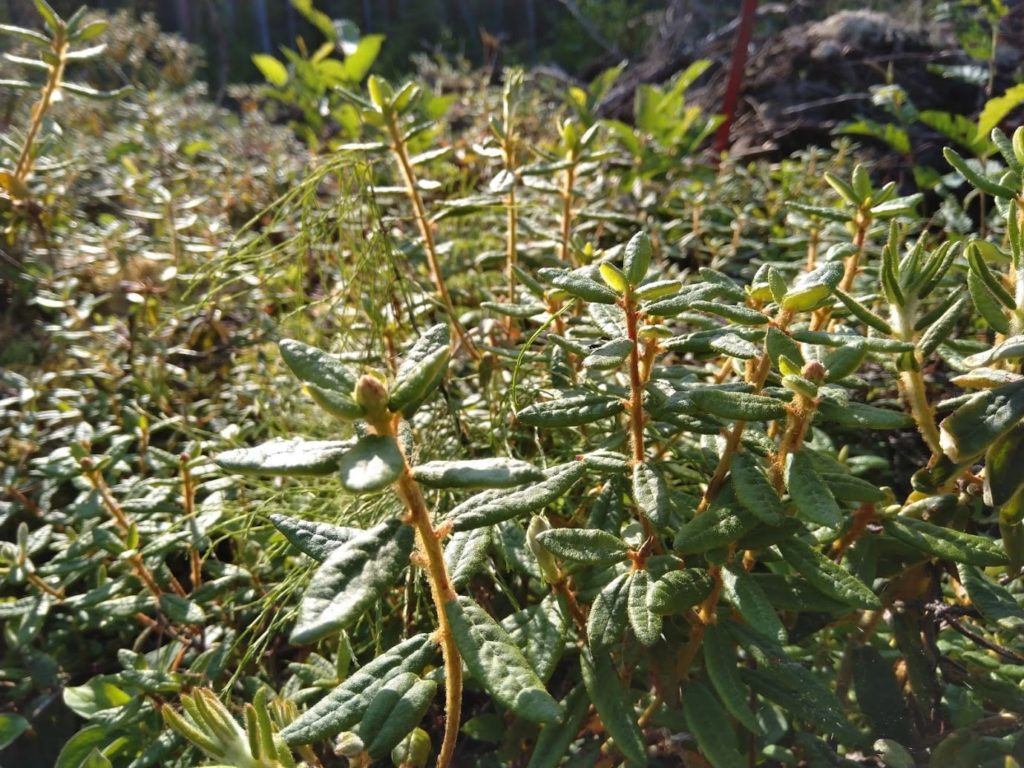
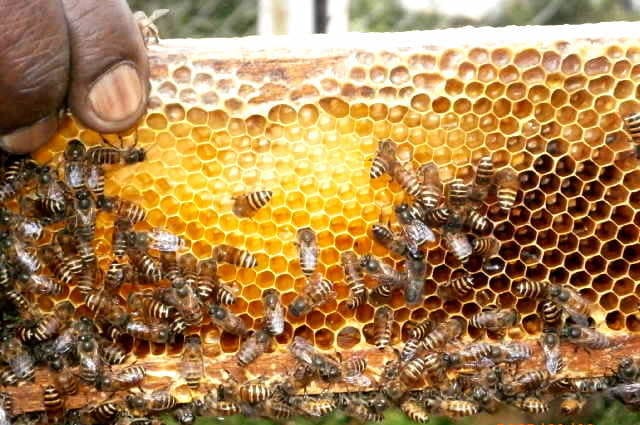
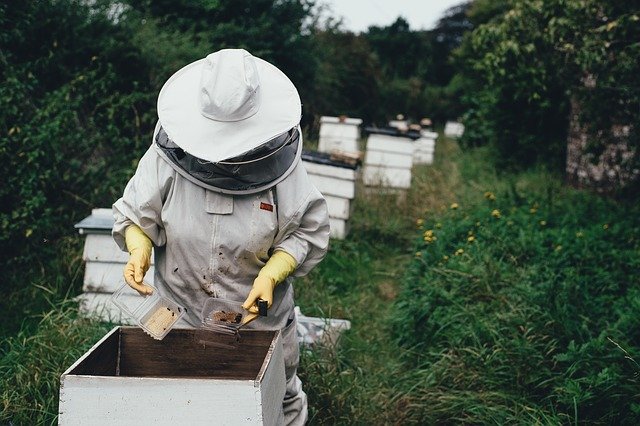
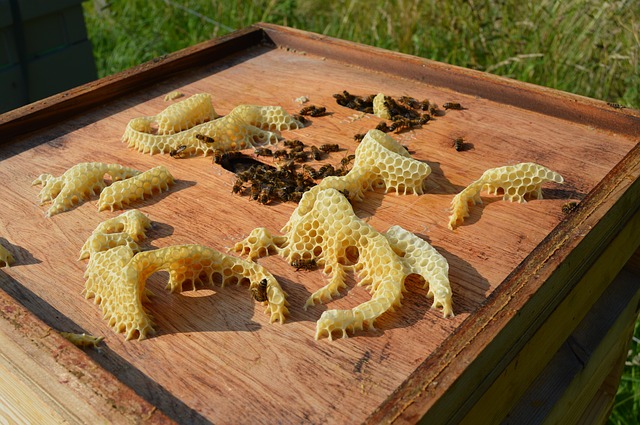
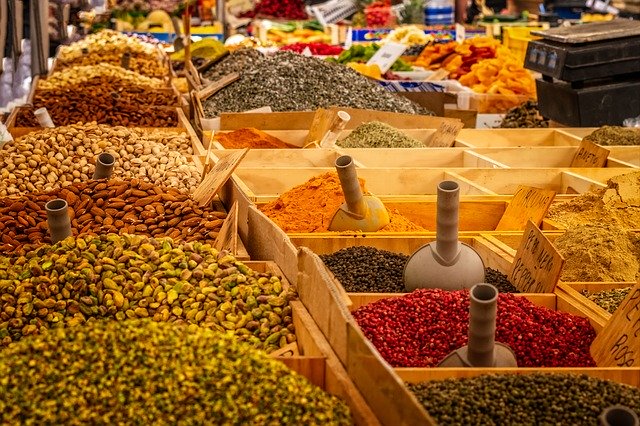
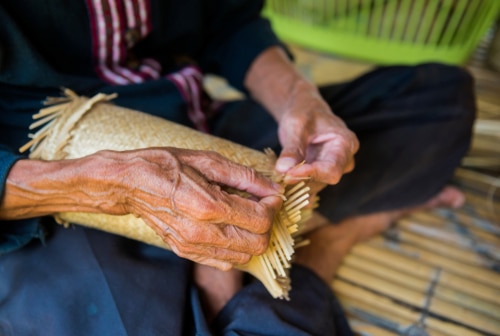
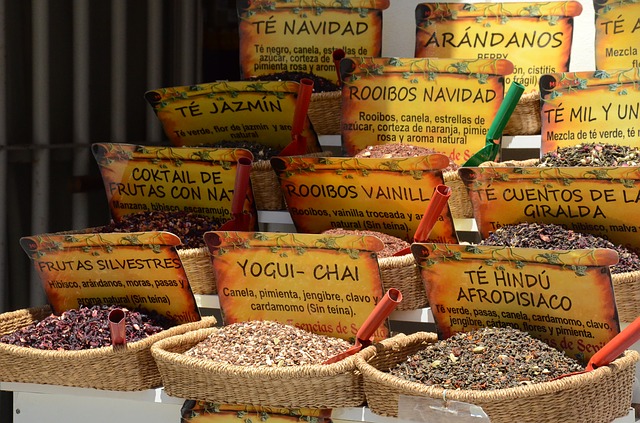
Great content! Super high-quality! Keep it up! 🙂